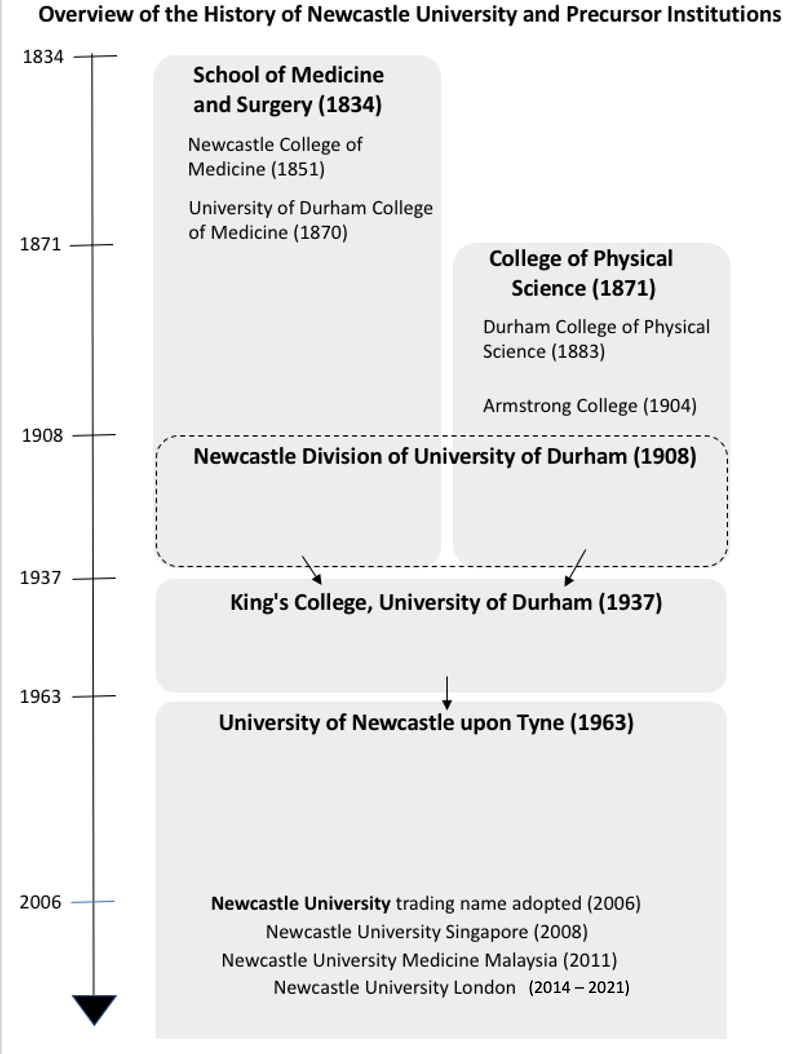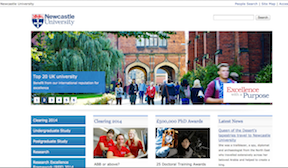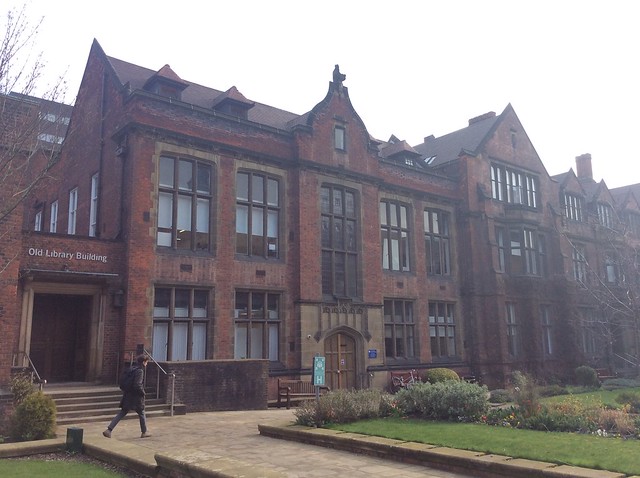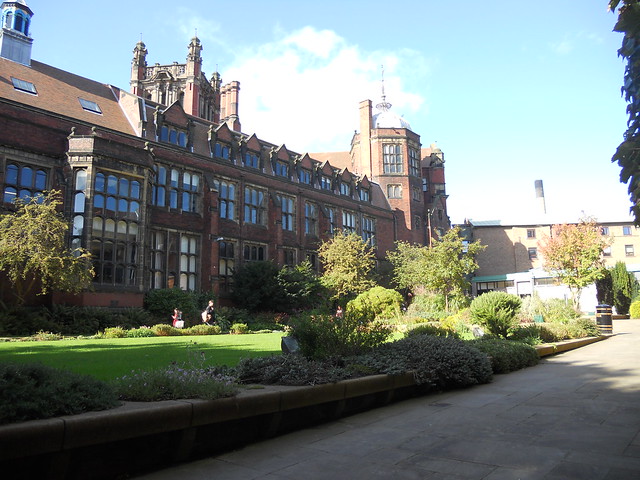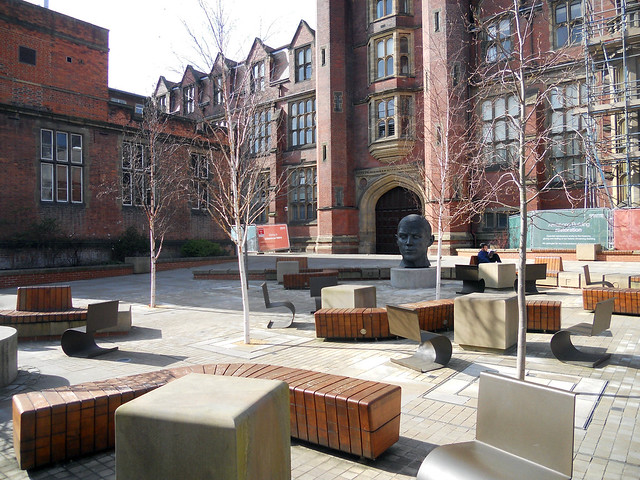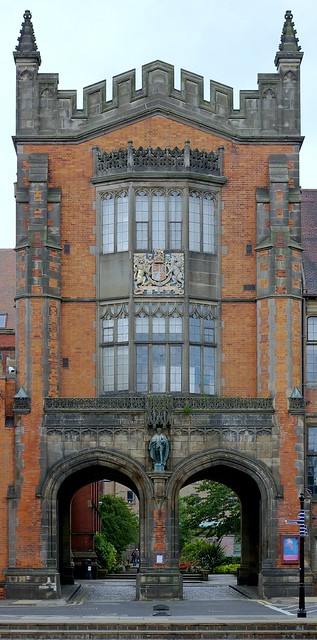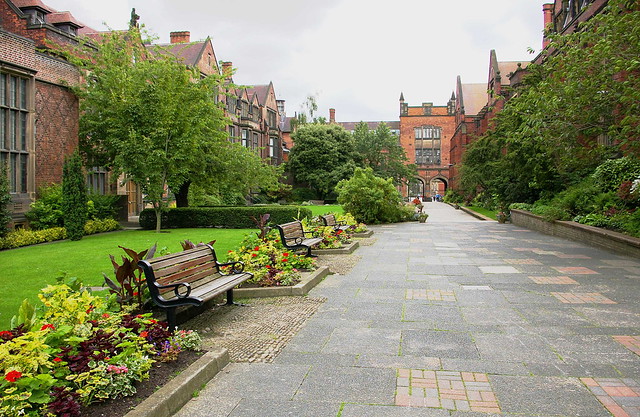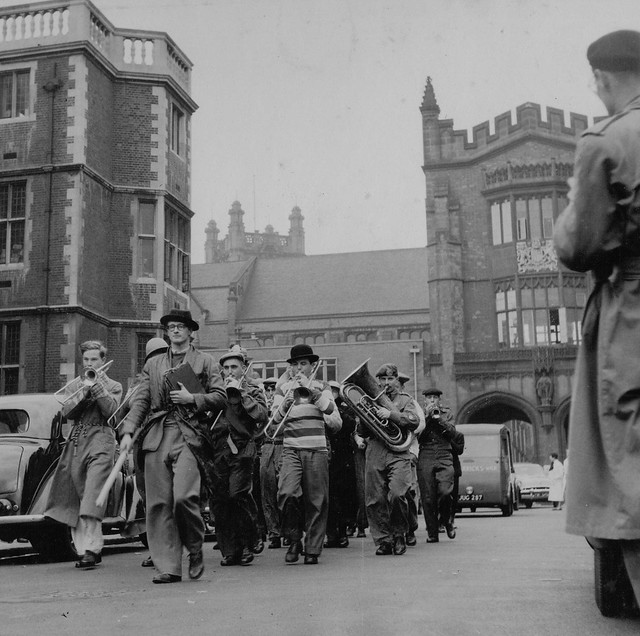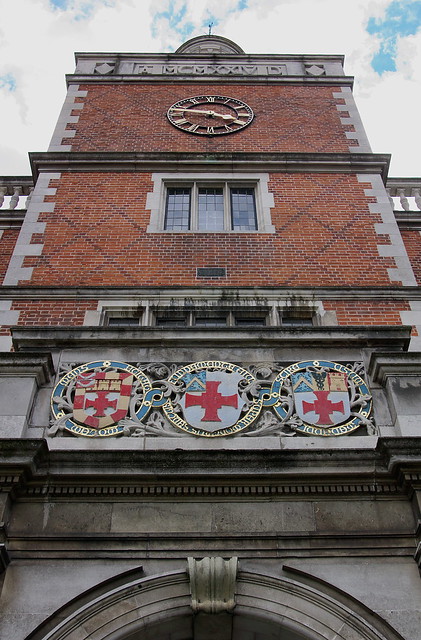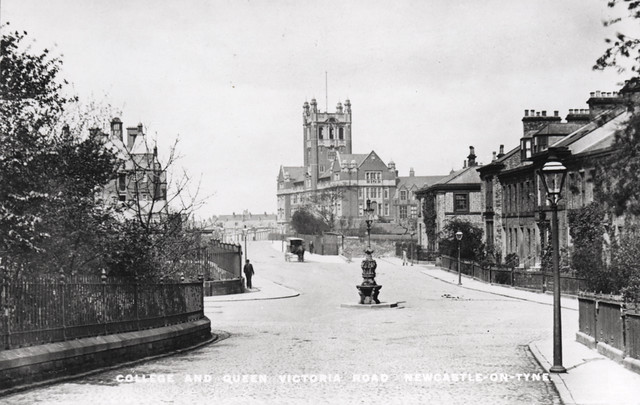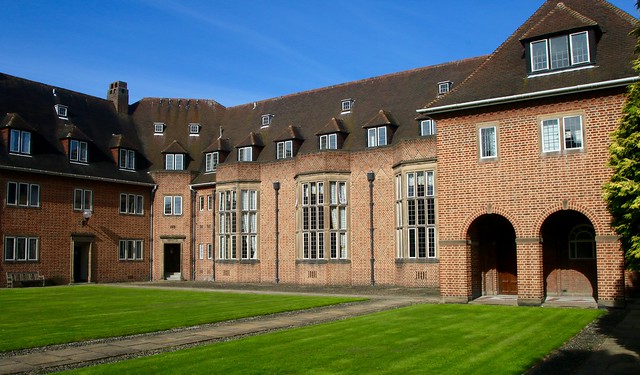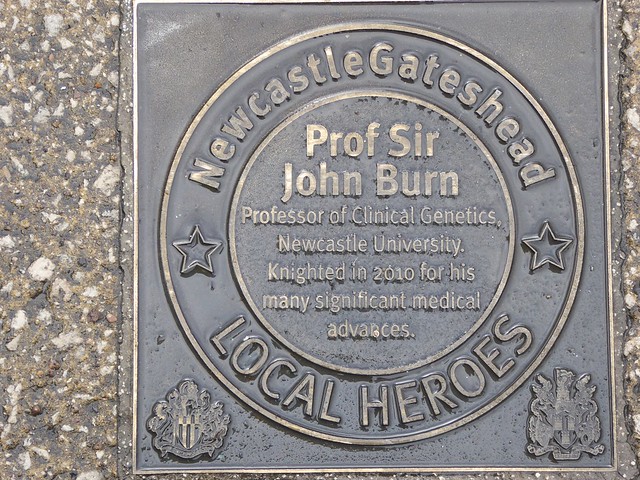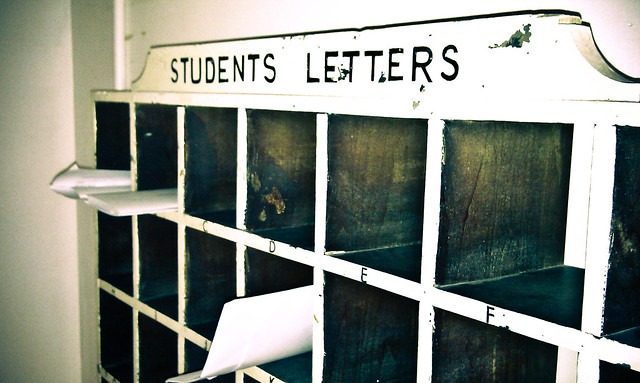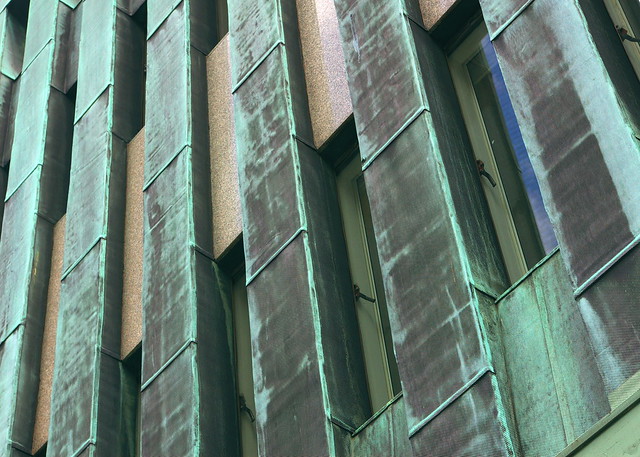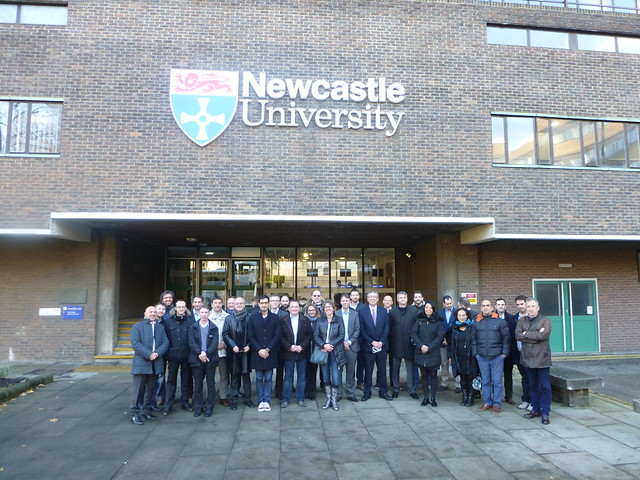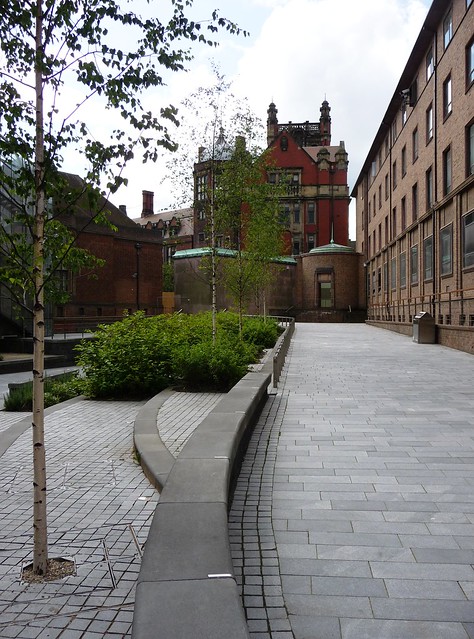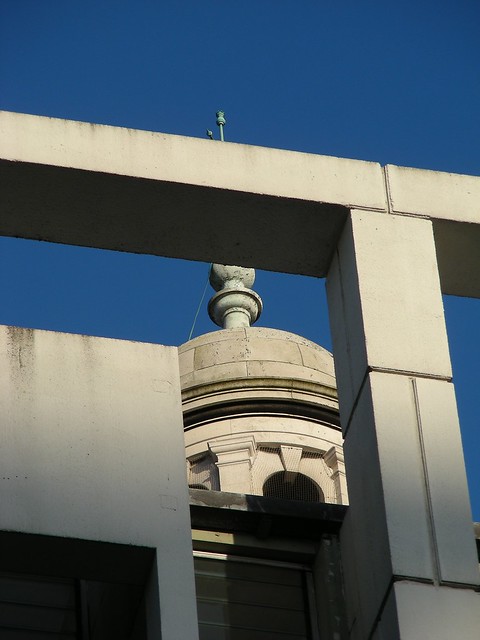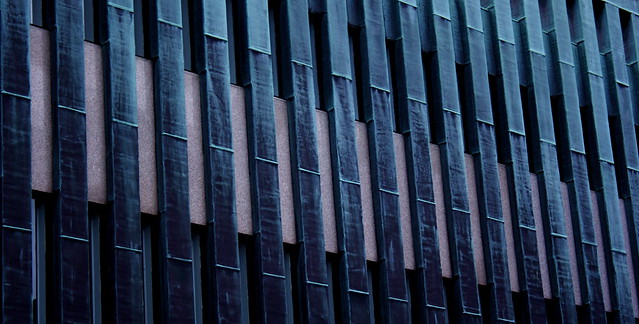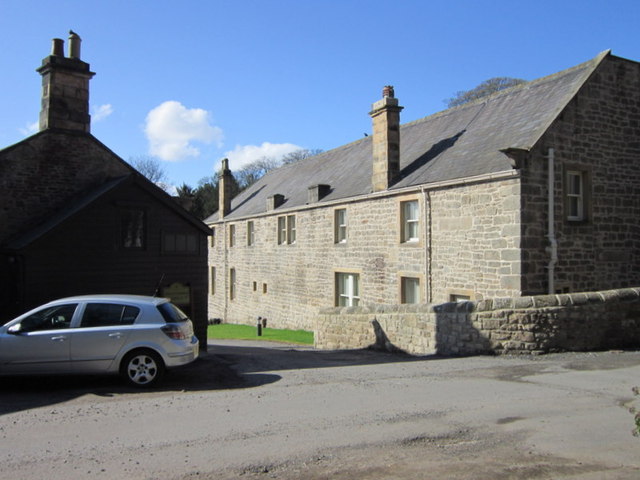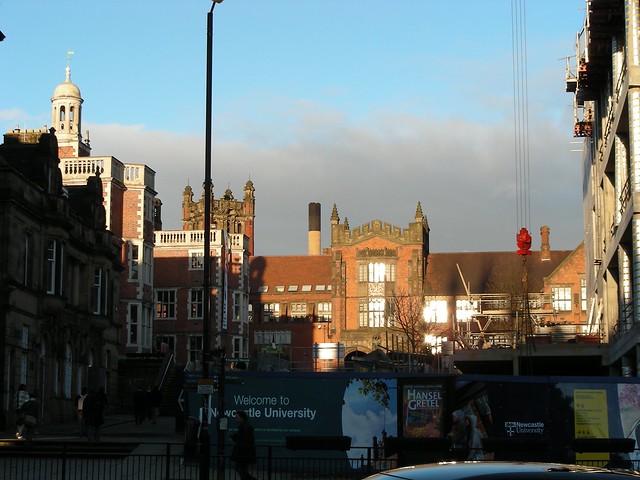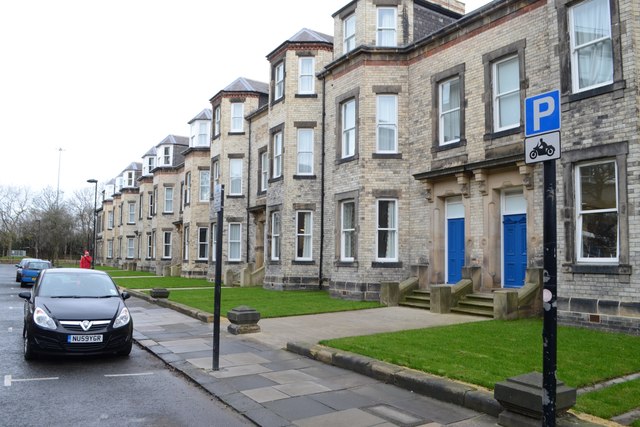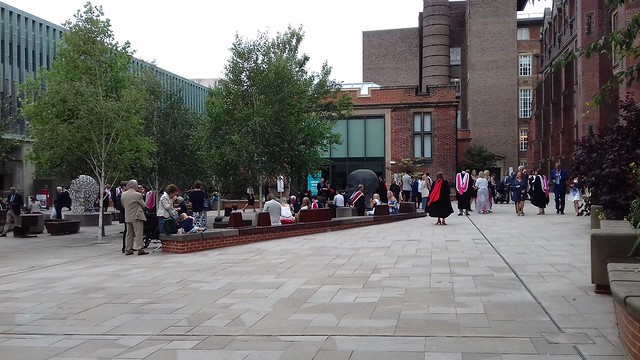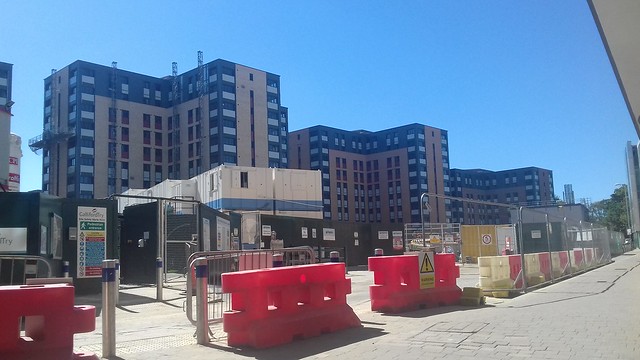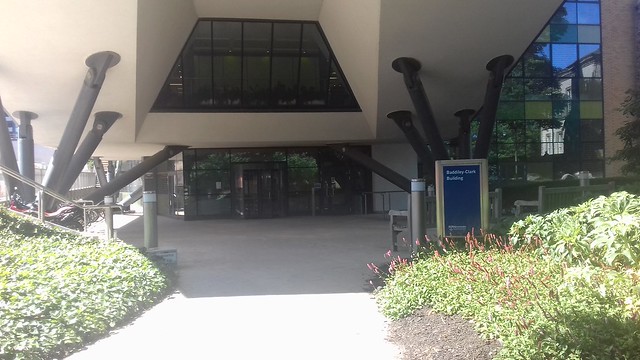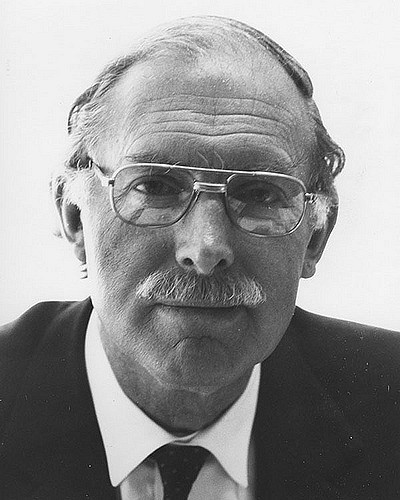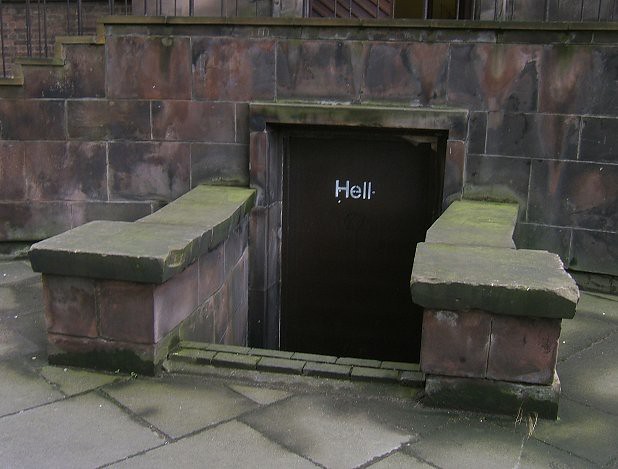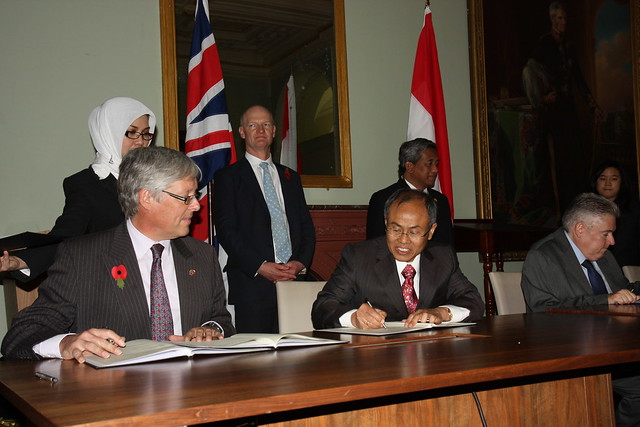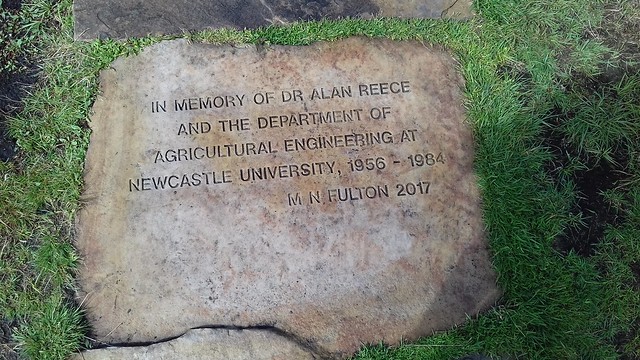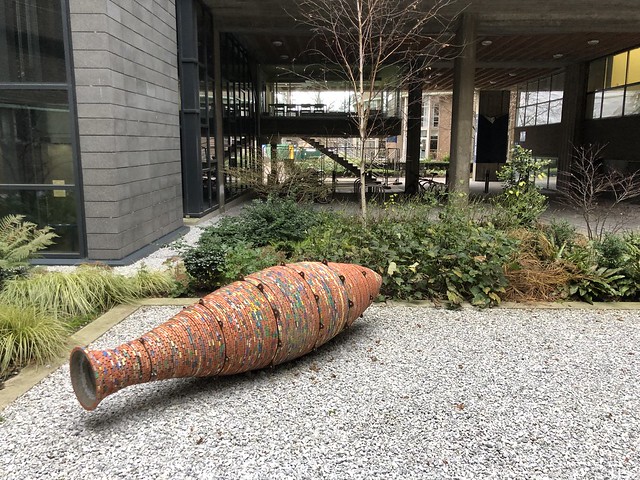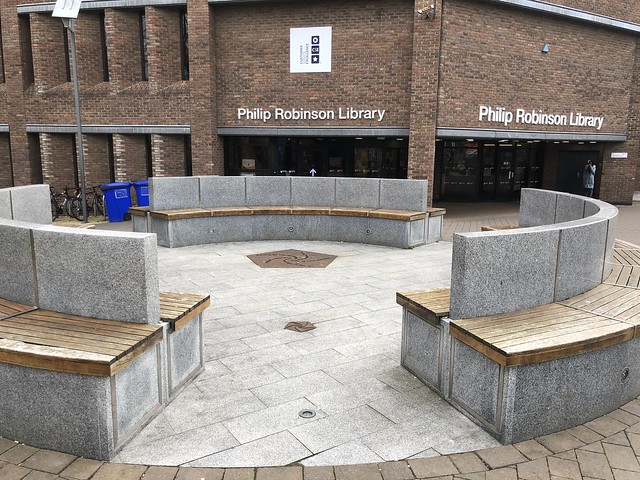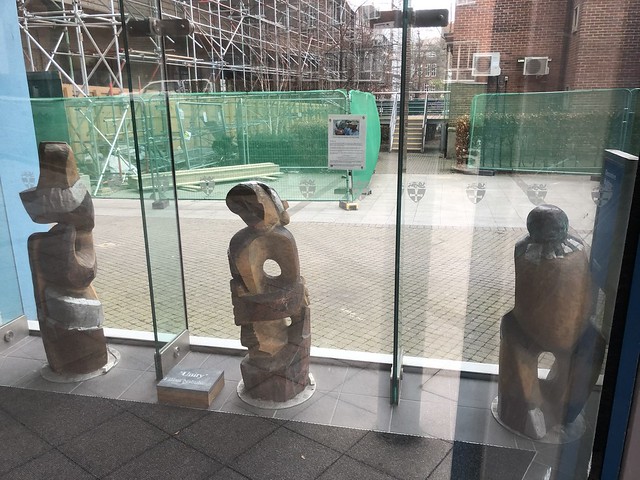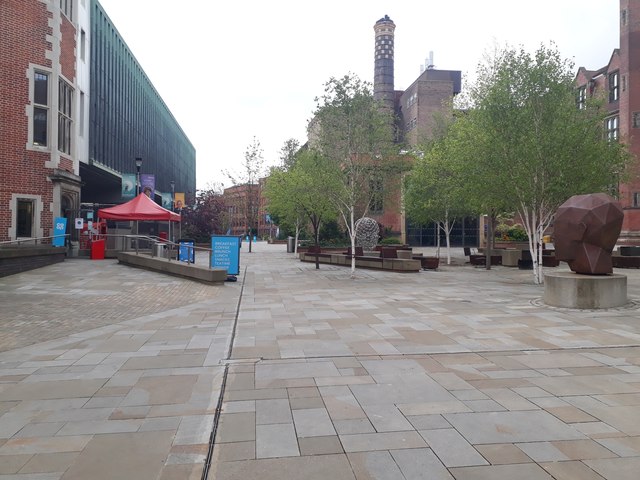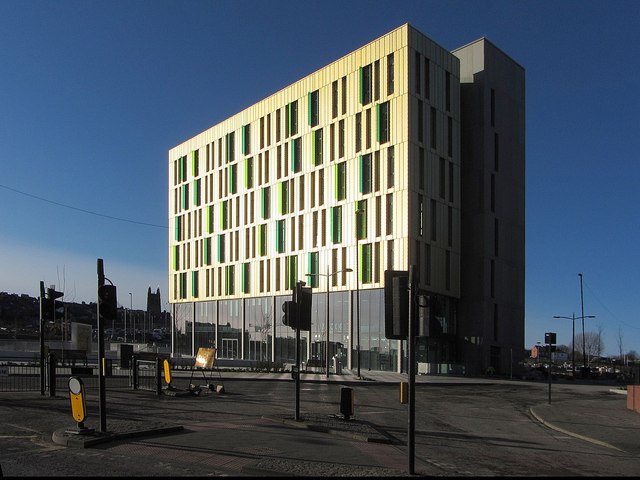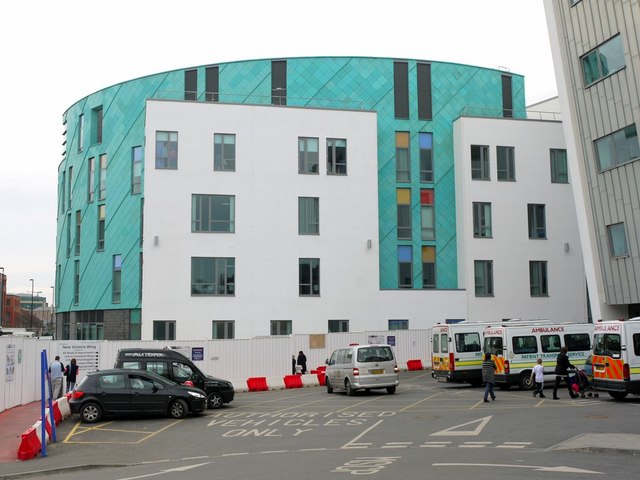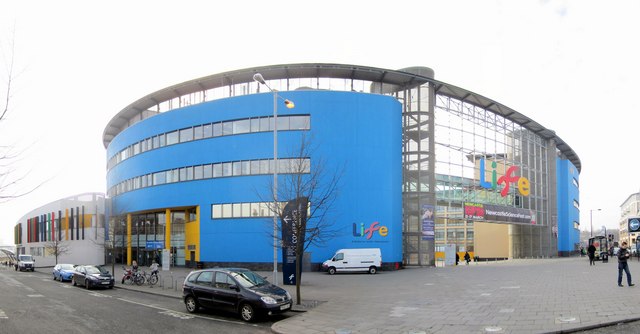Topics > Education > Universities > Newcastle University
Newcastle University
Newcastle University (officially, the University of Newcastle upon Tyne) is a public research university in Newcastle upon Tyne in the North-East of England. The university can trace its origins to a School of Medicine and Surgery (later the College of Medicine), established in 1834, and to the College of Physical Science (later renamed Armstrong College), founded in 1871. These two colleges came to form one division of the federal University of Durham, with the Durham Colleges forming the other. The Newcastle colleges merged to form King's College in 1937. In 1963, following an Act of Parliament, King's College became the University of Newcastle upon Tyne.
Newcastle University is a red brick university and is a member of the Russell Group, an association of prestigious research-intensive UK universities. The university has one of the largest EU research portfolios in the UK. Newcastle attracts over 20,000 students from more than 120 different countries.
Teaching and research are delivered in 24 academic schools and 40 research institutes and research centres, spread across three Faculties: the Faculty of Humanities and Social Sciences; the Faculty of Medical Sciences; and the Faculty of Science, Agriculture and Engineering. The university offers around 175 full-time undergraduate degree programmes in a wide range of subject areas spanning arts, sciences, engineering and medicine, together with approximately 340 postgraduate taught and research programmes across a range of disciplines.
History
The university has its origins in the School of Medicine and Surgery, which was established in Newcastle upon Tyne in October 1834, when it provided basic lectures and practical demonstrations to around 26 students. In June 1851, following a dispute among the teaching staff, the School split into two rival institutions. The majority formed the Newcastle College of Medicine, and the others established themselves as the Newcastle upon Tyne College of Medicine and Practical Science. By 1852, the majority college was formally linked to the University of Durham. It awarded its first 'Licence in Medicine' (Lic.Med) in 1856, and its teaching certificates were recognised by the University of London for graduation in medicine. The two colleges amalgamated in 1857 and renamed the University of Durham College of Medicine in 1870.
Attempts to realise a place for the teaching of sciences in the city were finally met with the foundation of the College of Physical Science in 1871. The college offered instruction in mathematics, physics, chemistry and geology to meet the growing needs of the mining industry, becoming the Durham College of Physical Science in 1883 and then renamed after William George Armstrong as Armstrong College in 1904. Both these separate and independent institutions later became part of the University of Durham, whose 1908 Act formally recognised that the university consisted of two Divisions, Durham and Newcastle, on two different sites. By 1908, the Newcastle Division was teaching a full range of subjects in the Faculties of Medicine, Arts, and Science, which also included agriculture and engineering.
Throughout the early 20th century, the medical and science colleges vastly outpaced the growth of their Durham counterparts and a Royal Commission in 1934 recommended the merger of the two colleges to form King's College, Durham. Growth of the Newcastle Division of the federal Durham University led to tensions within the structure and on 1 August 1963 an Act of Parliament separated the two, creating the University of Newcastle upon Tyne.
Coat of arms
As the successor of King's College, Durham, the university at its founding in 1963, adopted the coat of arms originally granted to the Council of King's College in 1937. In the Letters Patent authorising the transfer, the arms are blazoned Azure, a Cross of St Cuthbert Argent and in chief of the last a lion passant guardant Gules (On a blue shield, a silver square cross with flared ends, and on the top third of the shield, which is silver, a red lion walking and looking towards the viewer).
Above the portico of the Students' Union building are bas-relief carvings of the arms and mottoes of the University of Durham, Armstrong College and Durham University College of Medicine, the predecessor parts of Newcastle University. While a Latin motto, "mens agitat molem" (mind moves matter) appears in the Students' Union building, the university itself does not have an official motto.
Campus and location
United Kingdom
The university occupies a campus site close to Haymarket in central Newcastle upon Tyne. It is located to the northwest of the city centre between the open spaces of Leazes Park and the Town Moor.
The Armstrong building is the oldest building on the campus and is the site of the original Armstrong College. The building was constructed in three stages; the north east wing was completed first at a cost of £18,000 and opened by HRH Princess Louise on 5 November 1888. The south-east wing, which includes the Jubilee Tower, and south-west wings were opened in 1894. The Jubilee Tower was built with surplus funds raised from an Exhibition to mark Queen Victoria's Jubilee in 1887. The north-west front, forming the main entrance, was completed in 1906 and features two stone figures to represent science and the arts. Much of the later construction work was financed by Sir Isaac Lowthian Bell, the metallurgist and former Lord Mayor of Newcastle, after whom the main tower is named. In 1906 it was opened by King Edward VII.
The building contains the King's Hall, which serves as the university's chief hall for ceremonial purposes where Congregation ceremonies are held. It can contain 500 seats. King Edward VII gave permission to call the Great Hall, King's Hall. Graduation photographs are often taken in the University Quadrangle, next to the Armstrong building. In 1949 the Quadrangle was turned into a formal garden in memory of members of Newcastle University who gave their lives in the two World Wars.
The Bruce Building is a former brewery, constructed between 1896 and 1900 on the site of the Hotspur Hotel, and designed by the architect Joseph Oswald as the new premises of Newcastle Breweries Limited. As of 2014 the building had been empty for some time and the university had sold it on a long lease with the intention that it would be converted into student accommodation and commercial/office space. According to a spokesman for the university "It was not flexible enough for academic use. The proposed use is complementary to the university."
The Devonshire Building, opened in 2004, incorporates in an energy efficient design. It uses photovoltaic cells to help to power motorised shades that control the temperature of the building and geothermal heating coils. Its architects won awards in the Hadrian awards and the RICS Building of the Year Award 2004. The university won a Green Gown award for its construction.
Plans for additions and improvements to the campus were made public in March 2008 and completed in 2010 at a cost of £200 million. They included a redevelopment of the south-east (Haymarket) façade with a five-storey King's Gate building and sculpture as well as new student accommodation. Two additional buildings for the school of medicine were also built.
September 2012 saw the completion of the new buildings and facilities for INTO Newcastle University on the university campus. The main building provides 18 new teaching rooms, a Learning Resource Centre, a lecture theatre, science lab, administrative and academic offices and restaurant.
In addition to the city centre campus there are buildings such as the Dove Marine Laboratory located on Cullercoats Bay, and Cockle Park Farm in Northumberland.
Newcastle's Library Service is the only one in the UK to be awarded the government's Charter Mark for excellent customer services five times in a row, together with a Customer Services Excellence award. It consists of three main facilities. The Robinson Library is the main university library. It is named after Philip Robinson, a bookseller in the city and benefactor to the library. The Walton Library specialises in services for the Faculty of Medical Sciences in the Medical School. It is named after Lord Walton of Detchant, former Dean of the Faculty of Medicine and Professor of Neurology. The library has a relationship with the Northern region of the NHS allowing their staff to use the library for research and study. The Law Library specialises in resources relating to law. Together, these house over one million books and 500,000 electronic resources. Some schools within the university, such as the School of Modern Languages, also have their own smaller libraries with smaller highly specialised collections.
International
In September 2008, the university's first overseas branch was opened in Singapore, a Marine International campus called, NUMI Singapore. This later expanded beyond marine subjects and became Newcastle University Singapore, largely through becoming an Overseas University Partner of Singapore Institute of Technology.
In 2011, the Medical School opened a campus in Malaysia, Newcastle University Medicine Malaysia (NUMed).
Organisation
The current Chancellor is Sir Liam Donaldson. Donaldson was also the former Chief Medical Officer for England (1998 – May 2010). Donaldson assumed the position of Chancellor on 1 August 2009. The vice-chancellor is Chris Day, a hepatologist and former pro-vice-chancellor of the Faculty of Medical Sciences.
The university has an enrolment of almost 16,000 undergraduate and 5,600 postgraduate students from more than 120 countries. Teaching and research are delivered in 24 academic schools and 40 research institutes and research centres, spread across three Faculties: the Faculty of Humanities and Social Sciences; the Faculty of Medical Sciences; and the Faculty of Science, Agriculture and Engineering. The university offers around 175 full-time undergraduate degree programmes in a wide range of subject areas spanning arts, sciences, engineering and medicine, together with approximately 340 postgraduate taught and research programmes across a range of disciplines.
The university enjoys a friendly sporting rivalry with local universities. The Stan Calvert Cup is contested by major sports teams from Newcastle and Northumbria University. The Northumbrian Water University Boat Race has also taken place between the rowing clubs of Newcastle and Durham University.
It holds a series of public lectures called 'Insights' each year in the Curtis Auditorium in the Herschel Building. Many of the university's partnerships with companies, like Red Hat, are housed in the Herschel Annex.
Civic responsibility
The university describes itself as a civic university, with a role to play in society by bringing its research to bear on issues faced by communities (local, national or international).
It is focusing a major part of its research into tackling three profound challenges facing global society; namely Ageing, Sustainability and Social Renewal.
In 2012, the university opened the Newcastle Institute for Social Renewal to address issues of social and economic change, representing the research-led academic schools across the Faculty of Humanities and Social Sciences and the Business School.
Mark Shucksmith is Director of the Newcastle Institute for Social Renewal (NISR) at Newcastle University, where he is also Professor of Planning.
Newcastle City Council has worked with the university to tackle local issues. One such is the issue to make public service cuts fair in times of austerity. Chris Brink, former Vice-Chancellor at the university chaired the Newcastle Fairness Commission to decide how the concept of 'fairness' could be implemented with the full support of the community.
Newcastle was the only UK university to formally back the Jubilee Debt Campaign for the cancellation of debt in developing countries, and it has a strong ongoing commitment to the Make Poverty History campaign. At a high-profile honorary degree ceremony in January 2007, the university awarded honorary degrees to Bob Geldof, Gordon Brown MP, and Benjamin Mkapa (former president of Tanzania) among others, at an event that promoted debate on current debt-relief issues.
In 2006, the university was granted Fair trade status and from January 2007 it became a smoke-free campus.
The university has also been actively involved with several of the region's museums for many years. The Great North Museum: Hancock originally opened in 1884 and is often a venue for the university's events programme.
Faculties and schools
Teaching schools within the university are based within three faculties. Each faculty is led by a Provost/Pro-vice-chancellor and a team of Deans with specific responsibilities.
Faculty of Humanities and Social Sciences
- School of Architecture, Planning and Landscape
- School of Arts and Cultures
- Newcastle University Business School
- Combined Honours Centre
- School of Education, Communication and Language Sciences
- School of English Literature, Language and Linguistics
- School of Geography, Politics and Sociology
- School of History, Classics and Archaeology
- The Language Centre
- Newcastle Law School
- School of Modern Languages
Faculty of Medical Sciences
- Newcastle Biomedicine
- School of Biomedical Sciences
- School of Dental Sciences
- School of Medical Education
- School of Pharmacy
- School of Psychology
Faculty of Science, Agriculture and Engineering
- School of Computing
- School of Engineering
- School of Mathematics, Statistics and Physics
- School of Natural and Environmental Sciences
- Newcastle University Singapore
Business School
In 2002, Newcastle University Business School established the Business Accounting and Finance or 'Flying Start' degree in association with the ICAEW and PricewaterhouseCoopers. The course offers an accelerated route towards the ACA Chartered Accountancy qualification and is the Business School's Flagship programme. Its success has since resulted in Lancaster University and Ernst & Young collaborating to establish a competing degree programme in 2005.
The Business School was ranked 43rd in The Guardian League tables in 2011. In 2011 the Business School opened their new £50 million building built on the former Scottish and Newcastle brewery site next to St James' Park. This building was officially opened on 19 March 2012 by Lord Burns.
Medical School
The Medical School gained 143 out of a possible 144 points in its six subject areas in the Teaching Quality Assessment, and was also the first institution in Europe, second in the world, to receive permission to pursue stem-cell research in human embryos. According to UCAS, Cambridge, Oxford and Newcastle are the most academically selective universities for entry to study medicine in the United Kingdom. The BMC Medicine journal reported medical graduates from Oxford, Cambridge and Newcastle performed better in postgraduate tests than any other medical school in the UK.
In 2008 the Medical School announced that they were expanding their campus to Malaysia. In 2009 the university won a Queen's Anniversary Prize for their research into ageing.
The Royal Victoria Infirmary has always had close links with the Faculty of Medical Sciences as a major teaching hospital.
School of Modern Languages
The School of Modern Languages consists of five sections: East Asian (which includes Japanese and Chinese); French; German; Spanish, Portuguese & Latin American Studies; and Translating & Interpreting Studies. Six languages are taught from beginner's level to full degree level ‒ Chinese, Japanese, French, German, Spanish and Portuguese ‒ and beginner's courses in Catalan, Dutch, Italian and Quechua are also available. Beyond the learning of the languages themselves, Newcastle also places a great deal of emphasis on study and experience of the cultures of the countries where the languages taught are spoken. The School of Modern Languages hosts North East England's only branches of two internationally important institutes: the Camões Institute, a language institute for Portuguese, and the Confucius Institute, a language and cultural institute for Chinese.
The teaching of modern foreign languages at Newcastle predates the creation of Newcastle University itself, as in 1911 Armstrong College in Newcastle installed Albert George Latham, its first professor of modern languages. Often in the School's history, the high quality of its teaching, research and student experience have been recognised. In the 2015 edition of the Guardian University Guide, the school was ranked 14 out of 63. In the 2014 edition of the Sunday Times Good University Guide, Iberian Studies, French and German in the School were each placed in the top ten for their subject across the UK. (East Asian Studies does not feature in this Guide.) In the 2013 National Student Survey, Spanish in the School came 6th in the UK for overall student satisfaction, and German came 7th.
The School of Modern Languages at Newcastle is also very active in outreach work. It is the Lead Institution in the North East Routes into Languages Consortium and together with the Durham University, Northumbria University, the University of Sunderland, the Teesside University and a network of schools, undertakes work activities of discovery of languages for the 9 to 13 years pupils. This implies having festivals, Q&A sessions, language tasters, or quizzes organised, as well as a web learning work aiming at constructing a web portal to link language learners across the region. There is a range of on-campus activities like the Linguacast On-Campus: 10 and 12 years pupils come and learn more about the practice and teaching of language; they visit Newcastle campus to produce Modern Foreign languages (MFL) web material and study it back in school. The SML provides structures from their linguistic communities so as to set up taster or revisions sessions.
The Language Days provide the 11 and 13 Years pupils the opportunity to immerse in core skill area in preparation for examinations. It also hosts, together with the School of Education, Communication and Language Sciences, the North East Network for Languages regional centre. Furthermore, the SML is the provider of the only German Extension Courses in the UK; these courses are funded by the Department for Education.
Newcastle Law School
Newcastle Law School is the longest established law school in the north-east of England as law has been continuously taught at the university and its predecessor college some three decades before it became independent from Durham University. It boasts a number of recognised international and national experts in a variety of areas of legal scholarship ranging from Common and Chancery law, to International and European law, as well as contextual, socio-legal and theoretical legal studies. It has been recognised for excellence in teaching and research by external bodies. In 2002–03, the Higher Education Funding Council for England (HEFCE) Teaching Quality Audit, 'warmly commended' the quality of the taught programmes and self-critical and reflective practice of the staff. The latest national Research Assessment Exercise (RAE) published in December 2008 showed 85% of Newcastle Law School's research reached international standards of quality. In the previous RAE in 2001, the School was awarded a grade 5 for its research.
The Law School occupies four specially adapted late-Victorian town houses. The Staff Offices, the Alumni Lecture Theatre and seminar rooms as well as the Law Library are all located within the School buildings.
The Law School is regarded as being one of the top institutions in the UK. It is ranked 3rd nationally by the Sunday Times University Guide 2011, 11th by The Times Good University Guide 2011 and 8th by The Guardian University Guide 2011.
In 2011, the university announced that it receives over 1000 applications for 170 places available each year.
Newcastle has been ranked the number one UK law school in the prestigious Sunday Times University Guide 2012.
Cavitation tunnel
Newcastle University has the second largest cavitation tunnel in the UK. Founded in 1950, and based in the Marine Science and Technology Department, the Emerson Cavitation Tunnel is used as a test basin for propellers, water turbines, underwater coatings and interaction of propellers with ice. The Emerson Cavitation Tunnel was recently relocated to a new facility in Blyth.
Museums and galleries
The university is associated with a number of the region's museums and galleries, including the Great North Museum project, which is primarily based at the world-renowned Hancock Museum. The Great North Museum: Hancock also contains collections from two of the university's other museums, the Shefton Museum and the Museum of Antiquities. The university's Hatton Gallery is also a part of the Great North Museum project, and remains within the Fine Art Building.
Spin-out companies
To exploit and develop its research, the university has created a number of commercial spin-out companies.
Academic profile
Reputation and rankings
The university is a member of the Russell Group of the UK's research-intensive universities. It is ranked in the top 200 of most world rankings, and in the top 25 of most UK rankings. It is ranked 161st by QS, 114th by Leiden and 175th by Times Higher Education globally in 2017, placing it in the top 1% of universities. While nationally, it is ranked 26th by the Times/Sunday Times Good University Guide, 23rd by the Complete University Guide and 37th by the Guardian for 2016. The majority of its undergraduate courses are ranked in the top 20 by the Complete University Guide in the country with a number of subjects ranked in the top 10 such as Dentistry (3rd), Medicine (9th), Architecture (5th), Linguistics (3rd) Art and Design (1st) and Communication and Media Studies (1st). Newcastle Unversity achieved the best possible outcome in the Teaching Excellence Framework (TEF) - a Gold Award. It was awarded 5 QS stars in 2013. Newcastle won the Sunday Times University of the Year award in 2000 and is ranked 12th best in the UK by the Webometrics Ranking of World Universities. According to the university, its library is the only one in the UK to have been awarded the government's Charter Mark for excellent customer services five times in a row. Also, the university said it has a good track record for graduate employment in the country, and the Careers Service has won seven national careers awards in recent years by the Institute of Career Guidance.
The university's Cochrane Park sports facility was a training venue for the teams playing football games at St James' Park for the 2012 London Olympics. In 2013 the university entered into a two-year agreement with sports wear producer Adidas that includes scholarships and sportswear for two of the university's most talented athletes, and some funding for the Athletics' Union.
In 2016, Newcastle University became one of 16 universities in the world, and only two in the UK, to achieve Five Plus Stars from Quacquarelli Symonds. The university was awarded the perfect score of five Stars in all of the standardised assessment fields of Research, Internationalization, Facilities, Innovation, Inclusiveness, Specialist criteria and Student Employability (Newcastle University also made it to the Top 100 of QS Worldwide Employability Rankings in 2016).
Admissions
In terms of average UCAS points of entrants, Newcastle ranked joint 19th in Britain in 2014. According to the 2017 Times and Sunday Times Good University Guide, approximately 25% of Newcastle's undergraduates come from independent schools. The university gives offers of admission to 92.1% of its applicants, the highest amongst the Russell Group.
Research
As a member of the prestigious Russell Group of 24 research-intensive universities, Newcastle University has an outstanding reputation across a wide range of disciplines. All 38 of its submitted research areas were identified as "world leading" or "internationally recognised" by the latest 2008 Research Assessment Exercise (RAE).
It is ranked 17th in the UK for research power, according to the influential publication, Research Fortnight, and is in the UK's top twelve for research power in science and engineering. In the latest 2008 Research Assessment Exercise (RAE), Newcastle Biomedicine was ranked 8th in the UK overall for all "Medical" Units of Assessment combined in terms of research power. Newcastle is in the top 5 for both hospital- and laboratory-based clinical subjects, with two-thirds of its output classified as world leading (4*) or internationally excellent (3*) in the broad thematic areas of ageing, chronic disease, genetics and stem cells.
Student life
Students' Union
The university has many student organisations. Newcastle University Students' Union (known as the Union Society until a 2012 rebranding) includes student-run sports clubs and societies.
Unlike the majority of other students' unions in the UK, Newcastle University Students' Union (NUSU) owns the building where it is housed. The Union building was built in 1924 following a generous gift from an anonymous donor, who is now believed to have been Sir Cecil Cochrane, a major benefactor to the university. It is built in the neo-Jacobean style and was designed by the local architect Robert Burns Dick whose firm designed the Laing Art Gallery, the towers of the Tyne Bridge and The Spanish City in Whitley Bay. It was opened on 22 October 1925 by the Rt. Hon. Lord Eustace Percy, who later served as Rector of King's College from 1937 to 1952. It is Grade II listed on the National Heritage List for England. In 2010 the university donated £8 million towards a redevelopment project for the Union Building. This work won the Education Interior Design category of the National Mixology Interior Design Awards 2011.
The Students' Union is run by six sabbatical officers and fifteen part-time unpaid officer positions. The former leader of the Liberal Democrats Tim Farron was President of NUSU in 1991–1992. The Students' Union also employs around 300 people in ancillary roles including bar staff and entertainment organisers. Artists that have performed at Students' Union include Maxïmo Park, Snow Patrol, Kosheen, The Fratellis, Coldplay, Low, Mercury Rev, Goldie Lookin' Chain, Chicane, The Hoosiers and Damien Rice.
The Courier is a weekly student newspaper. Established in 1948, the current weekly readership is around 12,000, most of whom are students at the university. It is published every week during term time, usually on a Monday unless a major news event warrants a delay. The Courier has won The Guardians Student Publication of the Year award twice in a row, in 2012 and 2013.
In 2008, The Courier design editor Kerry Hyndman came runner up in the Guardian Student media award for Design for her work on the newspaper's entertainment pull-out, Pulp. As part of a re-design of the paper in 2009/2010 Pulp, originally a separate publication was replaced by a lifestyle section in the main body of The Courier.
Newcastle Student Radio is a student radio station based in the university. The station aims to cater for a wide range of musical tastes, anything from Metal and Punk to R&B and swing music.
Student accommodation
Newcastle University has many catered and non-catered halls of residence available to first-year students, located around the city of Newcastle. Popular Newcastle areas for private student houses and flats off campus include Jesmond, Heaton, Sandyford, Shieldfield and Spital Tongues.
In 2008 a survey conducted by an independent website ranked Newcastle as the number one student city in the UK, with a score of 63% across the categories of going out, shops, transport, community and facilities. Newcastle is also considered one of the world's friendliest cities. In another 2008 survey, by MSN Travel, Newcastle was named as the number one university.
St Mary's College in Fenham, one of the halls of residence, was formerly St Mary's College of Education, a teacher training college.
Sport
Newcastle is one of the leading universities for sport in the UK and is consistently ranked within the top 12 out of 152 higher education institutions in the British Universities and Colleges Sport (BUCS) rankings. More than 50 student-led sports clubs are supported through a team of professional staff and a network of indoor and outdoor sports facilities based over four sites. The University have a strong rugby history and were the winners of the Northumberland Senior Cup in 1965.
Visit the page: Newcastle University for references and further details. You can contribute to this article on Wikipedia.
For most up to date / definitive information see: http://www.ncl.ac.uk/about/visit/maps
Buildings in Newcastle and the North East of England (excludes campuses in London, Malaysia & Singapore):
| Building/Place | Year Built | Notes |
| Agriculture Building | 1964 | |
| Albion House | ||
| Arches | 1911 | Grade II Listed building |
| Architecture Building | ||
| Armstrong Building | 1887 | Grade II Listed building |
| Baddiley-Clark Building | ||
| Barbara Strang Teaching Centre | ||
| Barker House | ||
| Barras Building | ||
| Bedson Building | 1949 | |
| Bernicia Halls | ||
| Blyth Marine Station | ||
| Boiler House | 1923 | |
| Bowsden Court | ||
| Building Science | 1966 | Accommodation building, linked with Architecture |
| Carlton Lodge | ||
| Cassie Building | 1955 | Local List (heritage) |
| Castle Leazes | ||
| Catherine Cookson Building | ||
| Centre for Life | 2000 | A University/NHS partnership |
| Chaplain's Office | ||
| Claremont Bridge | 1968 | |
| Claremont Terrace | ||
| Claremont Tower | 1968 | |
| Cockle Park Farm | Northumberland | |
| Culture Lab (former Grand Assembly Rooms) | 1889 | Grade II Listed building |
| Daysh Building | 1968 | |
| Dental Hospital | ||
| Devonshire Building | 2004 | |
| Dove Marine Laboratory | 1908 | Located in Cullercoats |
| Drummond Building | 1975 | |
| Eldon Building | ||
| Farrell Centre | 1896 | Claremont Buildings. Grade II listed building. |
| Grand Hotel | 1902 | Percy Street |
| Great North Museum: Hancock | 1884 | Grade II* Listed building |
| Hadrian Building | 1964 | Formerly known as the King’s Road Centre |
| Hatton Gallery | 1911 | Grade II Listed building |
| Henry Wellcome Building | ||
| Herschel Building | 1962 | |
| INTO Centre | 2012 | University/INTO partnership |
| Joseph Cowen Halls | ||
| Kensington Terrace | ||
| King Edward VII Building | 1911 | Grade II listed Building. Includes the Hatton Gallery and Fine Art. |
| King George VI Building | 1939 | Grade II Listed building |
| King’s Gate | 2010 | |
| King’s Hall | ||
| Leazes Terrace | ||
| Liberty Central | ||
| Liberty Plaza | ||
| Line Building East | c.2015 | Replace an earlier 1920s building. Joins with the main INTO Building. |
| Magnet Court | ||
| Manor Bank | ||
| Marjorie Robinson Library Rooms | ||
| Marris House | ||
| Medical School | ||
| Merz Court | 1965 | Opened by Harold Wilson |
| Newcastle Law School | 21-24 Windsor Terrace | |
| Newcastle University Business School building | 2011/12 | New building on Barrack Road |
| Northern Stage | ||
| Old Library Building | Modern Languages, Research Beehive, Coutyard (cafe/restaurant). Entrance via the Quadrangle are in the older part of the building. | |
| Park Terrace | ||
| Paul O’Gorman Building | 2004 | |
| Percy Building | 1958 | |
| Robinson Library | 1982 | Philip Robinson Library |
| Politics Building | Near Windsor Terrace | |
| Ridley Buildings (1 and 2) | ||
| Science Central | Former site of Newcastle Breweries | |
| Sir James Spence Institute | Located in the Royal Victoria Infirmary | |
| Sports Centre | ||
| St Mary’s College | ||
| Stephenson Building | 1952 | |
| Students’ Union | 1924 | Grade II Listed building |
| The Core | 2014 | Part of Newcastle Science Central |
| The Key | Part of Newcastle Science Central | |
| The View | ||
| Turner Court | ||
| Tyne Subsea National Centre for Subsea and Offshore Engineering | Located in Wallsend | |
| Urban Sciences Building | ||
| William Leech Building | ||
| Windsor Place | ||
| Windsor Terrace | ||
| Wolfson Building |
Former Buildings of the University include:
Bruce Building, Percy Street (Sold, 2013)
Close House (Purchased by King's College in 1960. Sold, August 2004)
Museum of Antiquities (demolished)
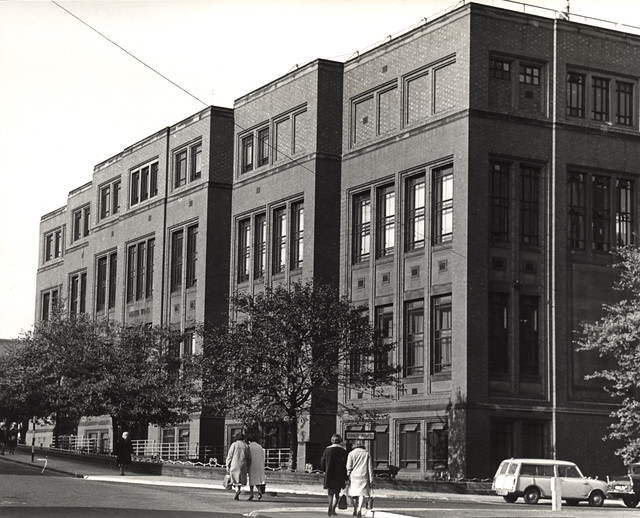
from Newcastle libraries (flickr)
013978:Health Wing Medical School University of Newcastle upon Tyne St. Thomas Street/King's Road University of Newcastle upon Tyne
Pinned by Simon Cotterill
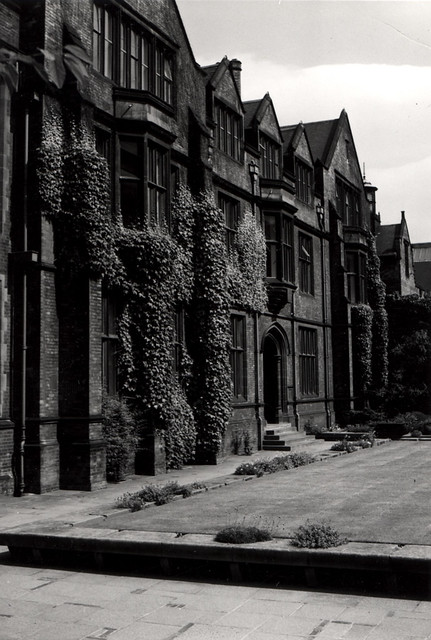
from Newcastle libraries (flickr)
063987:Quadrangle University of Newcastle upon Tyne Newcastle upon Tyne Unknown c.1960
Pinned by Simon Cotterill
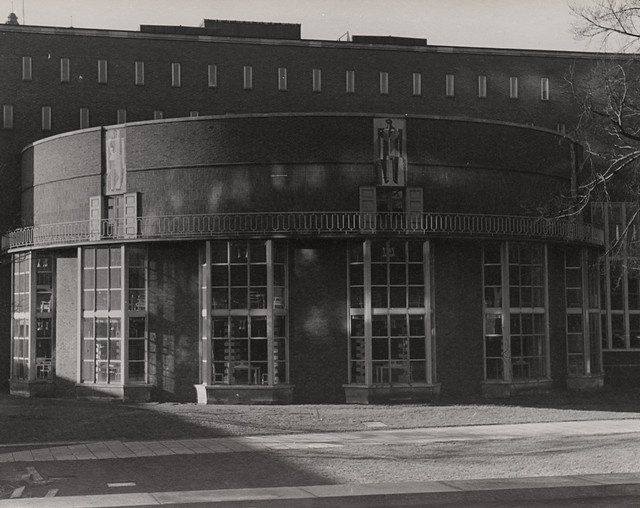
from Newcastle libraries (flickr)
017684:Library University of Newcastle upon Tyne Newcastle upon Tyne Unknown 1968
Pinned by Simon Cotterill

from Newcastle libraries (flickr)
044852:Medical School Library University of Newcastle upon Tyne Newcastle upon Tyne Unknown 1984
Pinned by Simon Cotterill
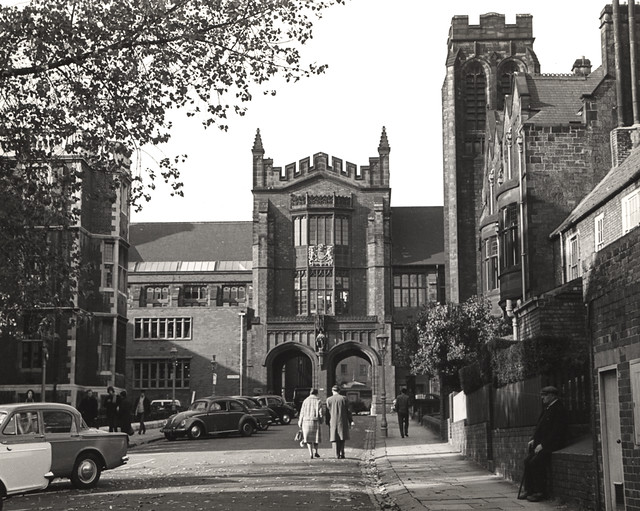
from Newcastle libraries (flickr)
013976:King's Walk University of Newcastle upon Tyne Newcastle upon Tyne Unknown 1964
Pinned by Simon Cotterill
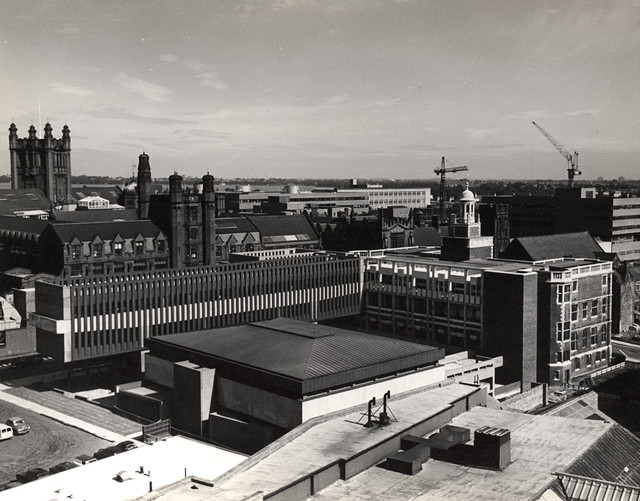
from Newcastle libraries (flickr)
015269:University of Newcastle upon Tyne, Newcastle upon Tyne 1966
Pinned by Simon Cotterill
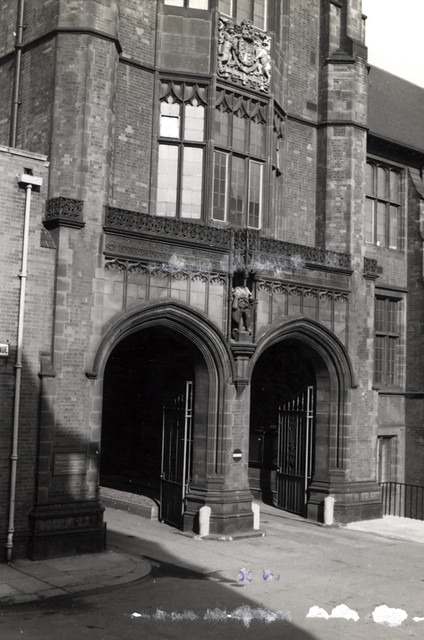
from Newcastle libraries (flickr)
063985:Entrance to Armstrong Building University of Newcastle upon Tyne Newcastle upon Tyne Unknown c.1960
Pinned by Simon Cotterill
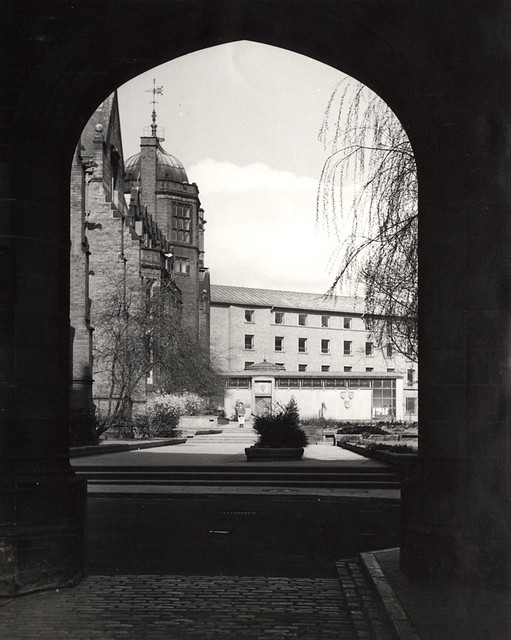
from Newcastle libraries (flickr)
014524:The Quadrangle University of Newcastle upon Tyne Newcastle upon Tyne Signey J. 1965
Pinned by Simon Cotterill
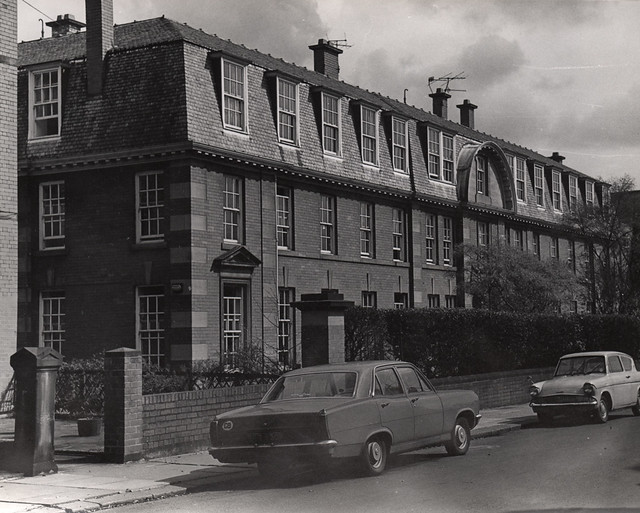
from Newcastle libraries (flickr)
018768:Easton Halls of Residence University of Newcastle upon Tyne Eskdale Terrace Jesmond Unknown 1969
Pinned by Simon Cotterill
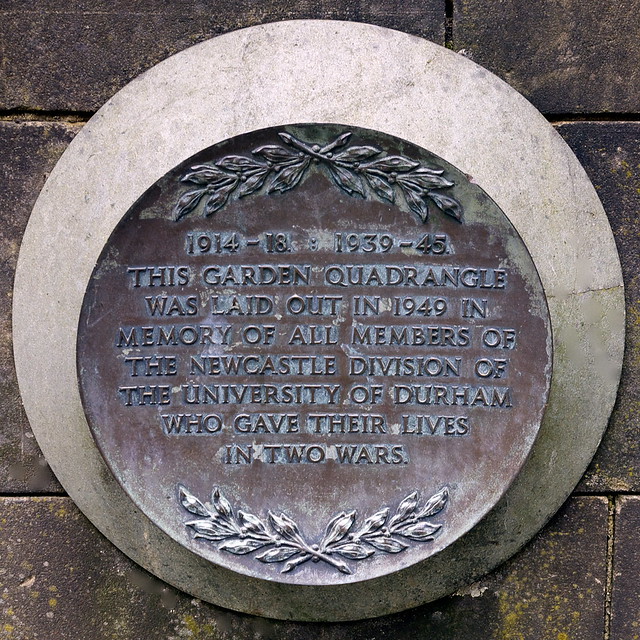
from Flickr (flickr)
Commemorative plaque, Armstrong quad, Newcastle University
Pinned by Simon Cotterill
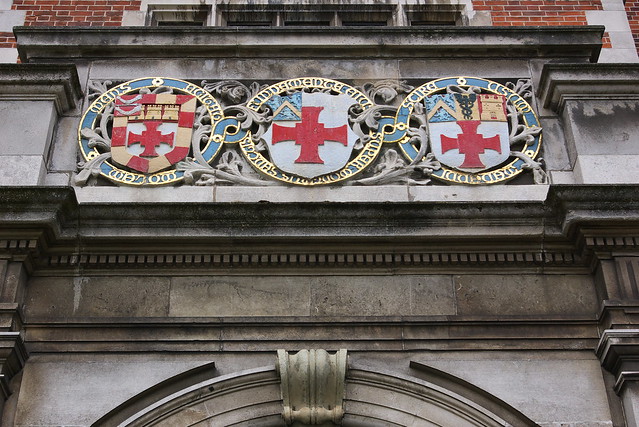
from Flickr (flickr)
Detail: coats of arms, Students' Union, Newcastle University
Pinned by Simon Cotterill
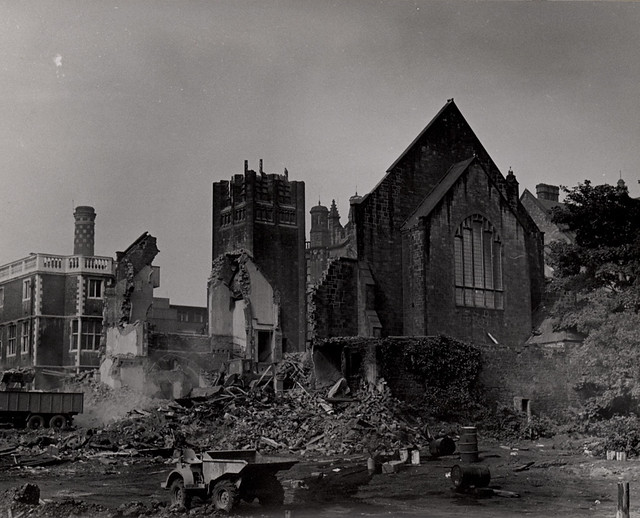
from Newcastle libraries (flickr)
020045:Presbyterian Church Barras Bridge Newcastle upon Tyne Unknown 1969
Pinned by Simon Cotterill

from Newcastle libraries (flickr)
015766:Henderson Hall of Residence University of Newcastle upon Tyne Red Hall Drive High Heaton Unknown 1966
Pinned by Simon Cotterill

from Newcastle libraries (flickr)
063987:Quadrangle University of Newcastle upon Tyne Newcastle upon Tyne Unknown c.1960
Pinned by Simon Cotterill
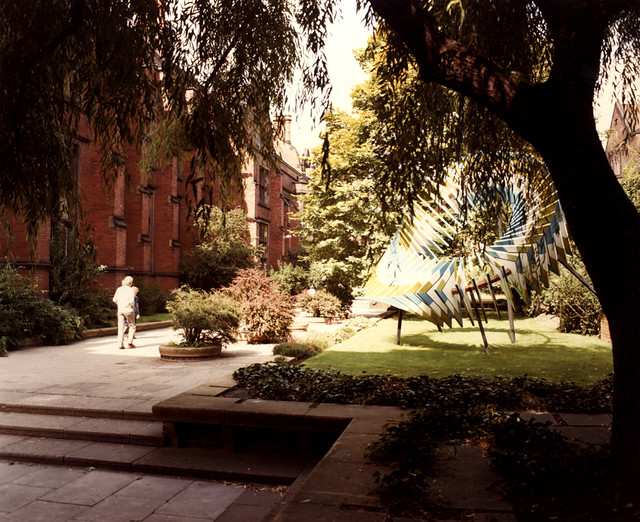
from Newcastle libraries (flickr)
054773:The Quadrangle University of Newcastle upon Tyne Newcastle upon Tyne City Engineers 1982
Pinned by Simon Cotterill
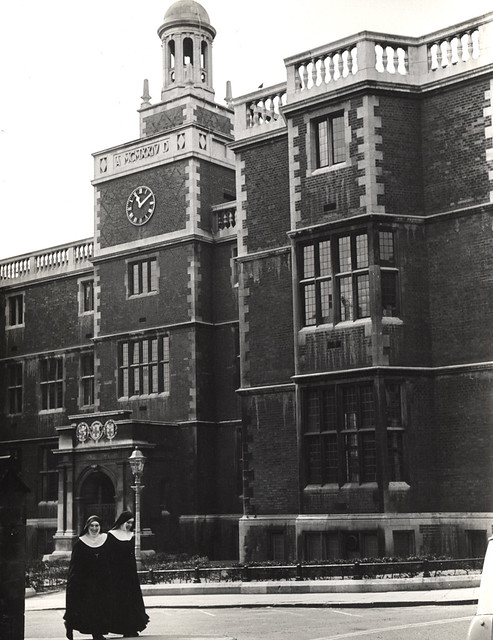
from Newcastle libraries (flickr)
014562:Students Union University of Newcastle upon Tyne Newcastle upon Tyne Signey J. 1965
Pinned by Simon Cotterill
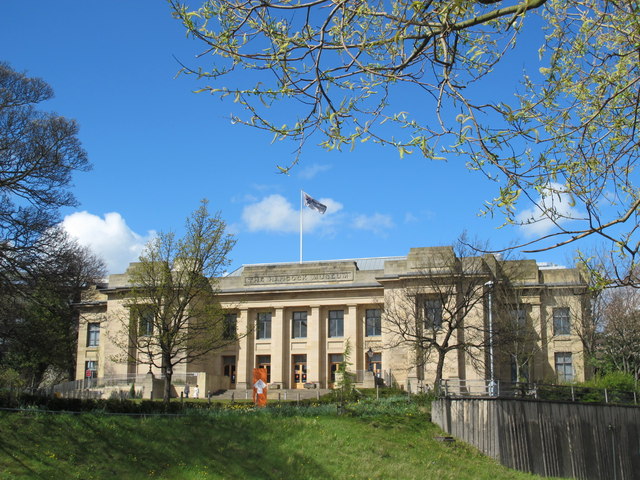
Co-Curate Page
Great North Museum: Hancock
- Overview About the Museum Map Street View The museum was established in 1884 to house the growing collections of the Natural History Society of Northumbria. It was named after John …
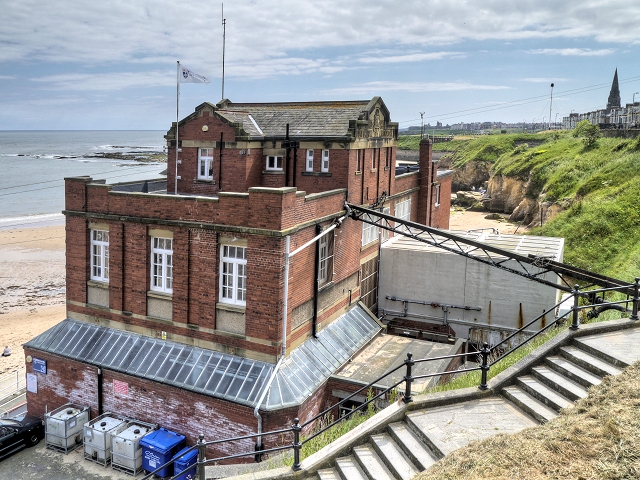
Co-Curate Page
Dove Marine Laboratory
- Overview About Map Street View The first laboratory at Cullercoats was constructed by the Northumberland Sea Fisheries Committee and opened on the 21st of October 1897.[1] It was a small wooden …
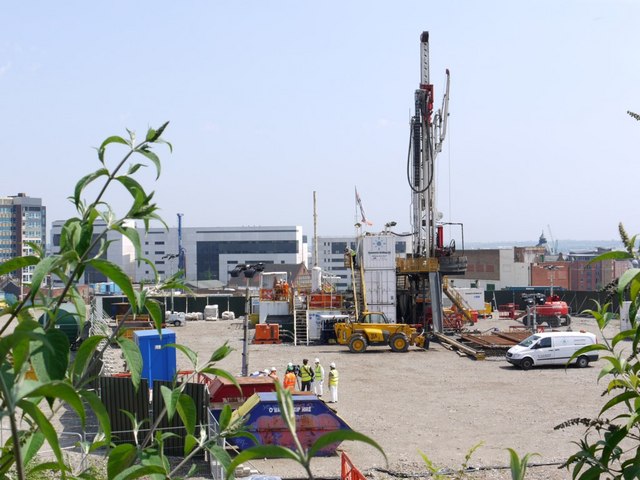
Co-Curate Page
Newcastle Helix
- Overview Map Street View Newcastle Helix - formerly known as Science Central and originally Science City. "Science Central is Newcastle's £350 million flagship project bringing together academia, the public sector, communities, …
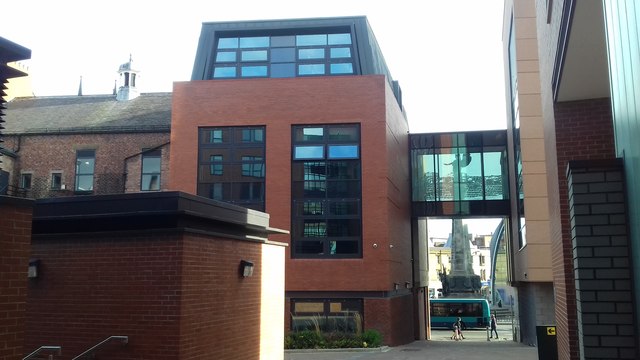
Co-Curate Page
Line Building East
- Overview Map Street View The original Line Building East on Percy Street in Newcastle was built in the 1920s, and was demolished and rebuilt c.2015. The name of the building relates …
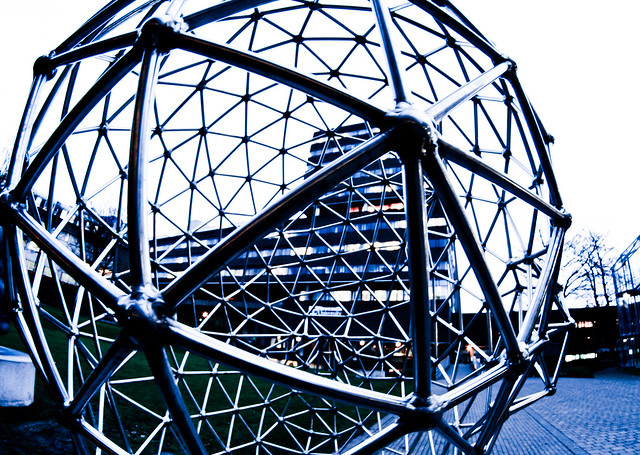
from Flickr (flickr)
Joseph Hillier Sculptures Newcastle University campus
Pinned by Simon Cotterill
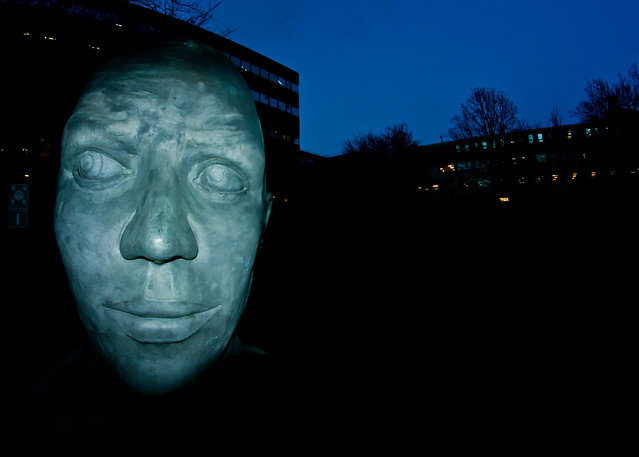
from Flickr (flickr)
Joseph Hillier Sculptures Newcastle University campus
Pinned by Simon Cotterill
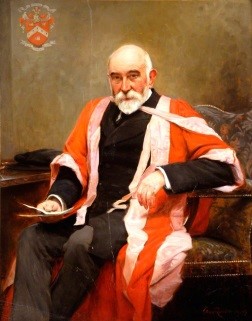
from http://www.ncl.ac.uk/
Sir George Hare Philipson (1836–1918), Professor of Medicine
- Oil painting by Charles Kay Robinson (c.1860–1939), held by Newcastle University. Please credit Newcastle University if you re-use this image.
Added by
Simon Cotterill
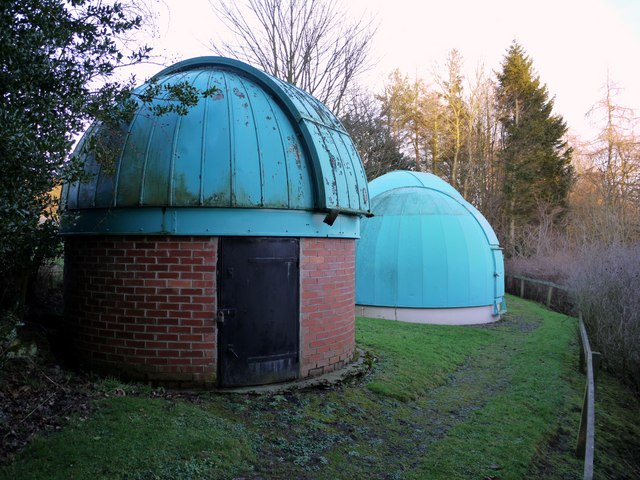
from Geograph (geograph)
University of Newcastle upon Tyne Espin Observatory, Close House
Pinned by Simon Cotterill

from https://artuk.org/discover/ar…
Presidents, Professors and Lecturers of the University College of Medicine, Durham
- Painting by Charles Kay Robertson (c.1860–1939), owned by Newcastle University. Digital image c/o Art UK.
Added by
Simon Cotterill
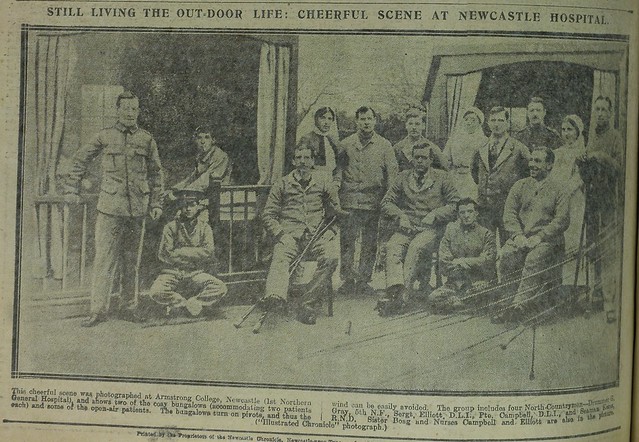
from IllustratedChronicles (flickr)
Still Living the Outdoor Life: Cheerful Scene at Newcastle Hospital
Pinned by Simon Cotterill
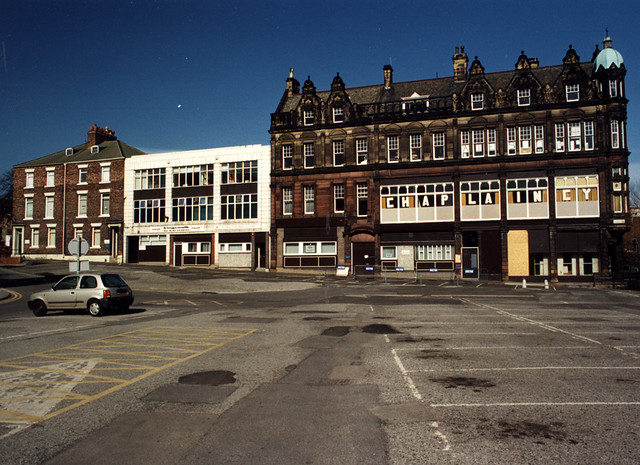
from Newcastle libraries (flickr)
062386:Kings Road Newcastle upon Tyne Maybury Malcolm 1995
Pinned by Peter Smith

Co-Curate Page
William Whitfield (1920 - 2019)
- Overview About William Whitfield Sir William Whitfield architect (1920 - 2019). Born in Newcastle and studied architecture at King's College, which later became Newcastle University. Whitfield later designed the Kings …
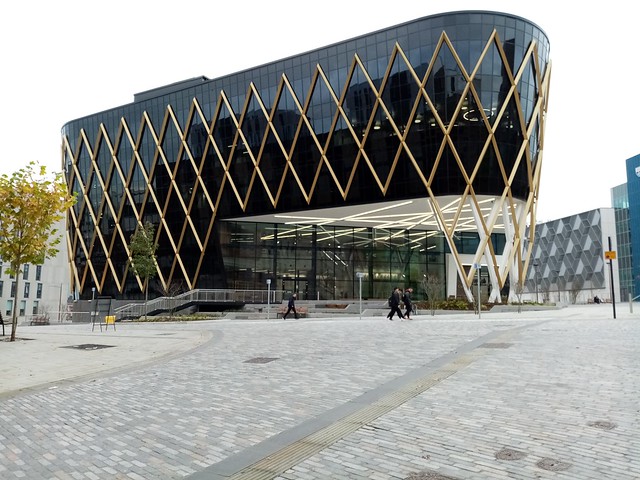
Co-Curate Page
The Catalyst
- Overview Map Street View The Catalyst is a building at Newcastle Helix which hosts 3 research centres of Newcastle University, together with collaborative space for businesses. It host the National …
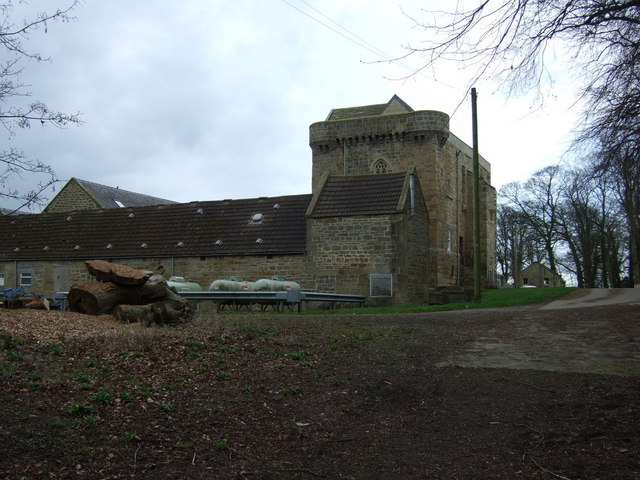
Co-Curate Page
Cockle Park
- Overview Map Street View Cockle Park Farm is a working 307 hectare farm located about 3 miles north of Morpeth in Northumberland. In the 13th century, this was the manor …

from Flickr (flickr)
Dr Grace Harwood Stewart Artwork, Bank House, Pilgrim Street, Newcastle Upon Tyne, Tyne & Wear, England.
Pinned by Simon Cotterill


from Newcastle libraries (flickr)
013978:Health Wing Medical School University of Newcastle upon Tyne St. Thomas Street/King's Road University of Newcastle upon Tyne
Pinned by Simon Cotterill

from Newcastle libraries (flickr)
063987:Quadrangle University of Newcastle upon Tyne Newcastle upon Tyne Unknown c.1960
Pinned by Simon Cotterill

from Newcastle libraries (flickr)
017684:Library University of Newcastle upon Tyne Newcastle upon Tyne Unknown 1968
Pinned by Simon Cotterill

from Newcastle libraries (flickr)
044852:Medical School Library University of Newcastle upon Tyne Newcastle upon Tyne Unknown 1984
Pinned by Simon Cotterill

from Newcastle libraries (flickr)
013976:King's Walk University of Newcastle upon Tyne Newcastle upon Tyne Unknown 1964
Pinned by Simon Cotterill

from Newcastle libraries (flickr)
015269:University of Newcastle upon Tyne, Newcastle upon Tyne 1966
Pinned by Simon Cotterill

from Newcastle libraries (flickr)
063985:Entrance to Armstrong Building University of Newcastle upon Tyne Newcastle upon Tyne Unknown c.1960
Pinned by Simon Cotterill

from Newcastle libraries (flickr)
014524:The Quadrangle University of Newcastle upon Tyne Newcastle upon Tyne Signey J. 1965
Pinned by Simon Cotterill

from Newcastle libraries (flickr)
018768:Easton Halls of Residence University of Newcastle upon Tyne Eskdale Terrace Jesmond Unknown 1969
Pinned by Simon Cotterill

from Flickr (flickr)
Commemorative plaque, Armstrong quad, Newcastle University
Pinned by Simon Cotterill

from Flickr (flickr)
Detail: coats of arms, Students' Union, Newcastle University
Pinned by Simon Cotterill

from Newcastle libraries (flickr)
020045:Presbyterian Church Barras Bridge Newcastle upon Tyne Unknown 1969
Pinned by Simon Cotterill

from Newcastle libraries (flickr)
015766:Henderson Hall of Residence University of Newcastle upon Tyne Red Hall Drive High Heaton Unknown 1966
Pinned by Simon Cotterill

from Newcastle libraries (flickr)
063987:Quadrangle University of Newcastle upon Tyne Newcastle upon Tyne Unknown c.1960
Pinned by Simon Cotterill

from Newcastle libraries (flickr)
054773:The Quadrangle University of Newcastle upon Tyne Newcastle upon Tyne City Engineers 1982
Pinned by Simon Cotterill

from Newcastle libraries (flickr)
014562:Students Union University of Newcastle upon Tyne Newcastle upon Tyne Signey J. 1965
Pinned by Simon Cotterill

Co-Curate Page
Great North Museum: Hancock
- Overview About the Museum Map Street View The museum was established in 1884 to house the growing collections of the Natural History Society of Northumbria. It was named after John …

Co-Curate Page
Dove Marine Laboratory
- Overview About Map Street View The first laboratory at Cullercoats was constructed by the Northumberland Sea Fisheries Committee and opened on the 21st of October 1897.[1] It was a small wooden …

Co-Curate Page
Newcastle Helix
- Overview Map Street View Newcastle Helix - formerly known as Science Central and originally Science City. "Science Central is Newcastle's £350 million flagship project bringing together academia, the public sector, communities, …

Co-Curate Page
Line Building East
- Overview Map Street View The original Line Building East on Percy Street in Newcastle was built in the 1920s, and was demolished and rebuilt c.2015. The name of the building relates …

from Flickr (flickr)
Joseph Hillier Sculptures Newcastle University campus
Pinned by Simon Cotterill

from Flickr (flickr)
Joseph Hillier Sculptures Newcastle University campus
Pinned by Simon Cotterill

from http://www.ncl.ac.uk/
Sir George Hare Philipson (1836–1918), Professor of Medicine
- Oil painting by Charles Kay Robinson (c.1860–1939), held by Newcastle University. Please credit Newcastle University if you re-use this image.
Added by
Simon Cotterill

from Geograph (geograph)
University of Newcastle upon Tyne Espin Observatory, Close House
Pinned by Simon Cotterill

from https://artuk.org/discover/ar…
Presidents, Professors and Lecturers of the University College of Medicine, Durham
- Painting by Charles Kay Robertson (c.1860–1939), owned by Newcastle University. Digital image c/o Art UK.
Added by
Simon Cotterill

from IllustratedChronicles (flickr)
Still Living the Outdoor Life: Cheerful Scene at Newcastle Hospital
Pinned by Simon Cotterill

from Newcastle libraries (flickr)
062386:Kings Road Newcastle upon Tyne Maybury Malcolm 1995
Pinned by Peter Smith

Co-Curate Page
William Whitfield (1920 - 2019)
- Overview About William Whitfield Sir William Whitfield architect (1920 - 2019). Born in Newcastle and studied architecture at King's College, which later became Newcastle University. Whitfield later designed the Kings …

Co-Curate Page
The Catalyst
- Overview Map Street View The Catalyst is a building at Newcastle Helix which hosts 3 research centres of Newcastle University, together with collaborative space for businesses. It host the National …

Co-Curate Page
Cockle Park
- Overview Map Street View Cockle Park Farm is a working 307 hectare farm located about 3 miles north of Morpeth in Northumberland. In the 13th century, this was the manor …

from Flickr (flickr)
Dr Grace Harwood Stewart Artwork, Bank House, Pilgrim Street, Newcastle Upon Tyne, Tyne & Wear, England.
Pinned by Simon Cotterill
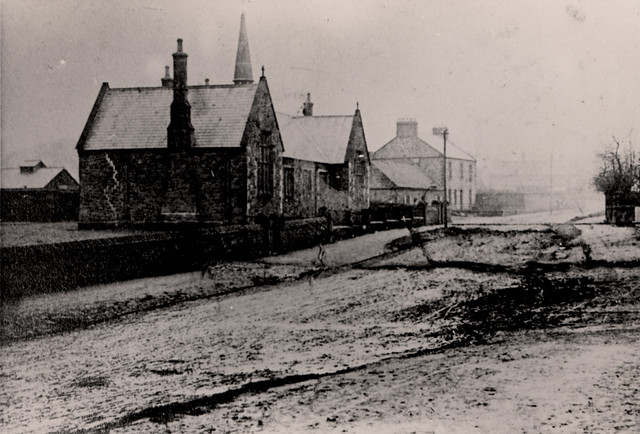
Education

Universities
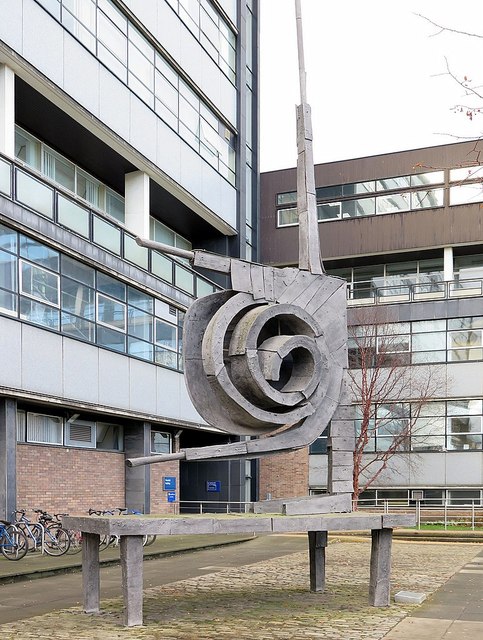
'Spiral Nebula', Newcastle University
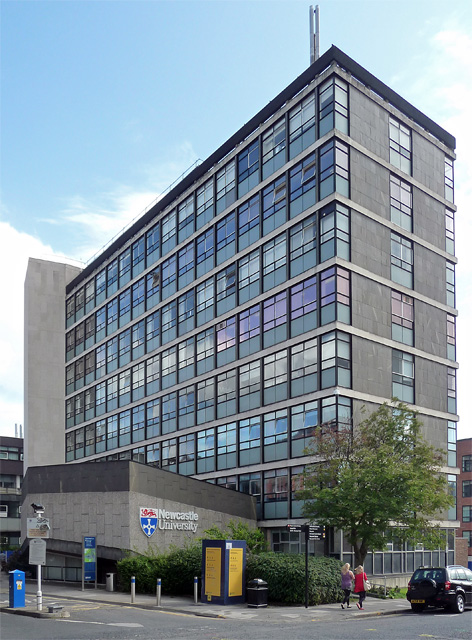
Agriculture Building, Newcastle University
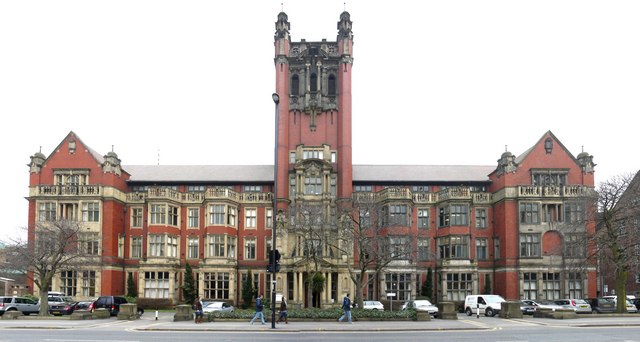
Armstrong Building, Newcastle University
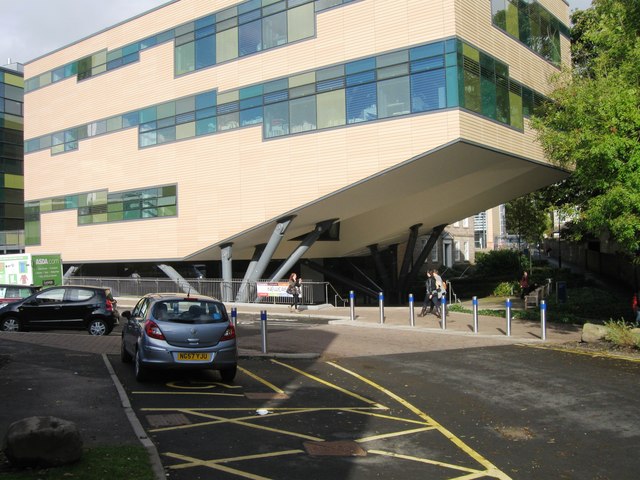
Baddiley-Clark Building, Newcastle University
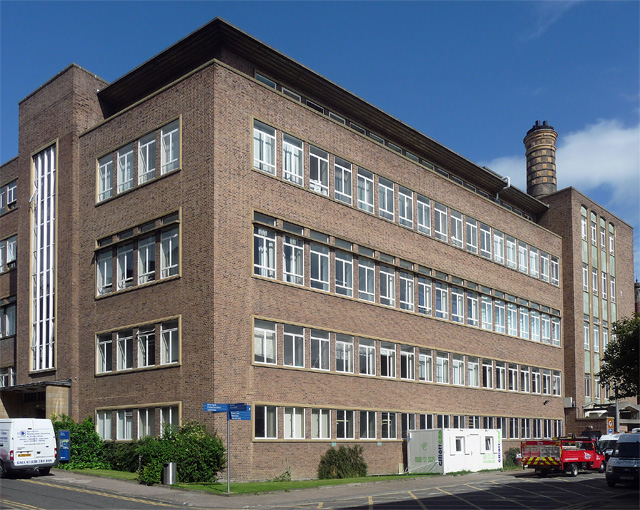
Bedson Building, Newcastle University
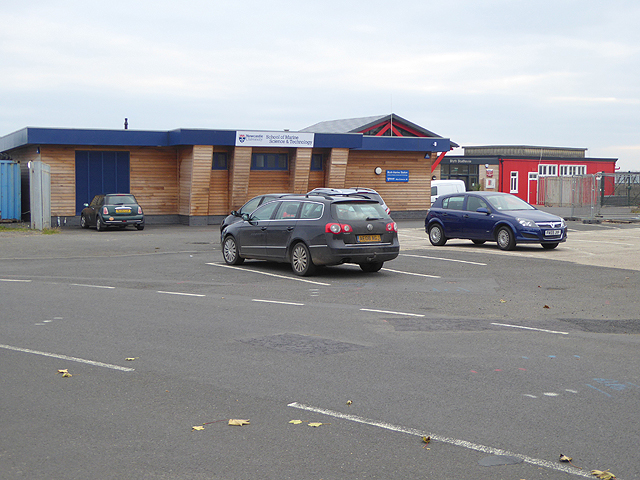
Blyth Marine Station
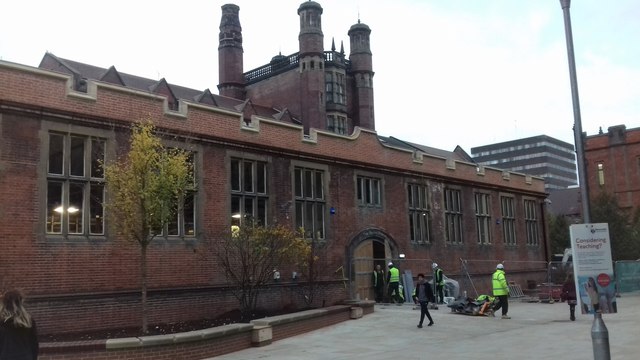
Boiler House, Newcastle University

Business School, Newcastle University
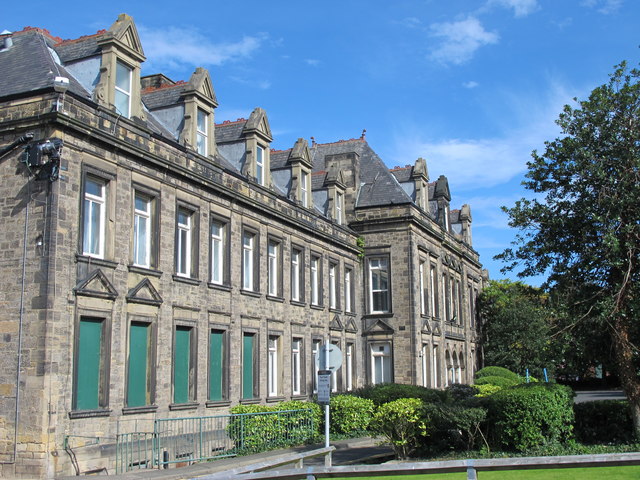
Campus for Ageing and Vitality, Newcastle University

Cassie Building, Newcastle University
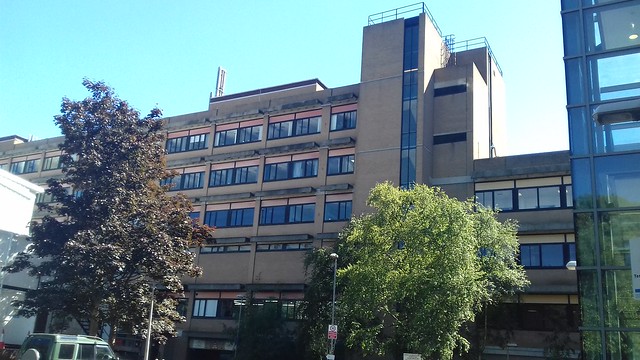
Cookson Building, Newcastle University
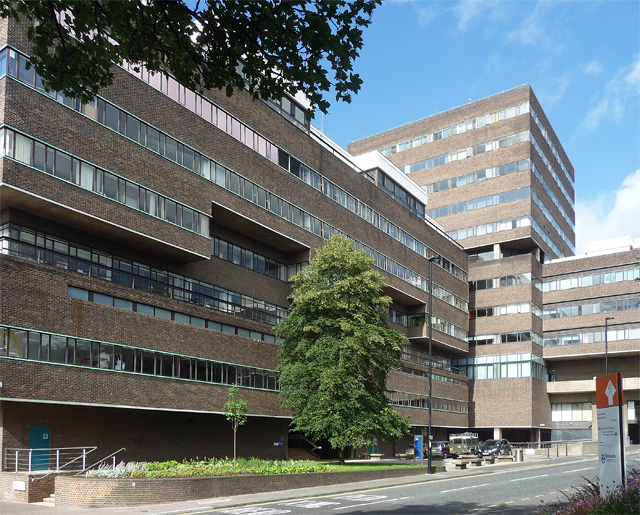
Daysh Building, Newcastle University

Devonshire Building, Newcastle University
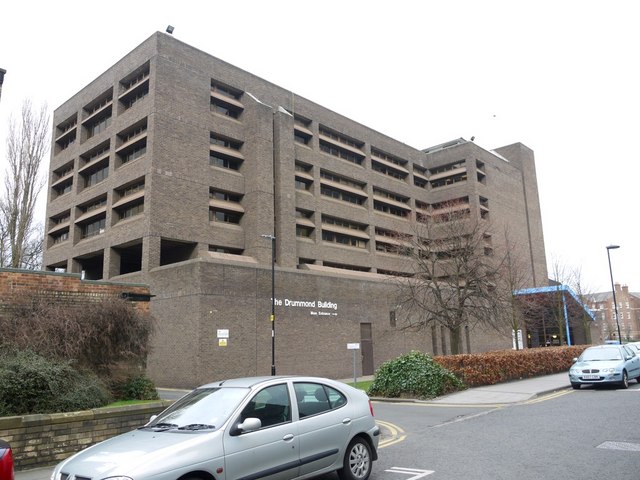
Drummond Building, Newcastle University
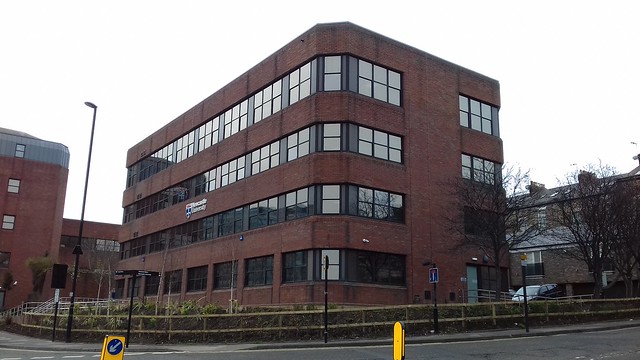
Elizabeth Barraclough Building, Newcastle University

Faculty of Medical Sciences, Newcastle University
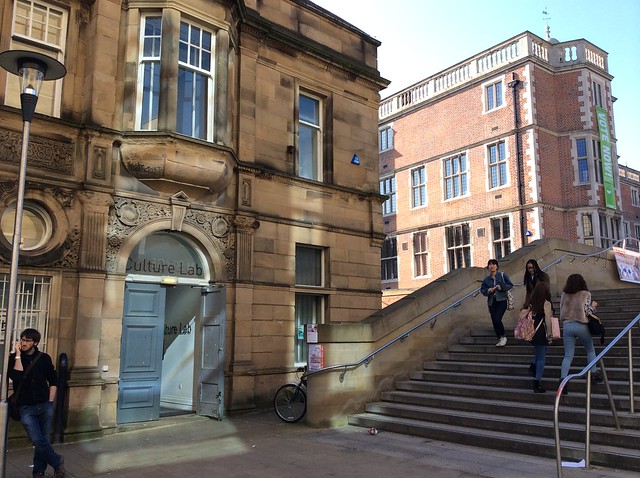
Former Grand Assembly Rooms, Newcastle University
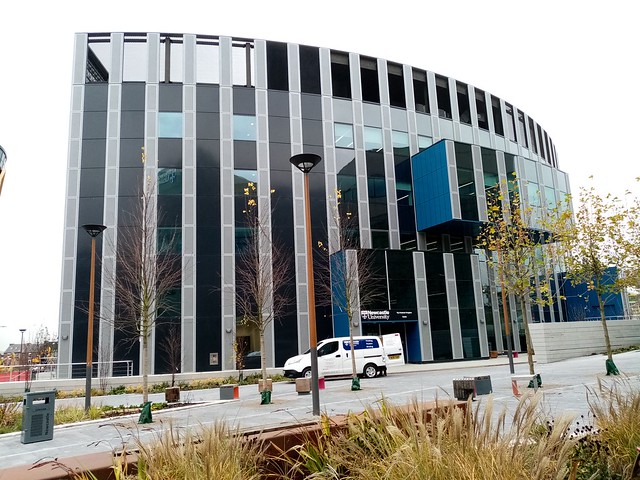
Frederick Douglass Centre, Newcastle University
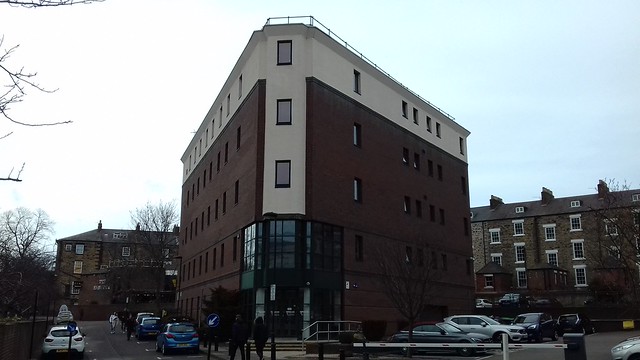
Great North House, Newcastle University
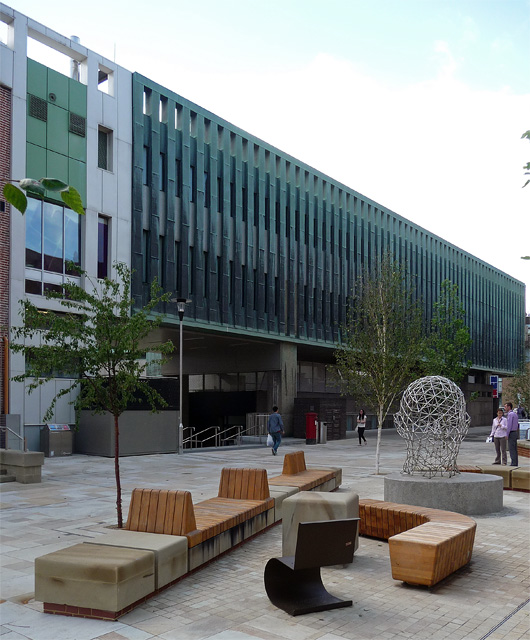
Hadrian Building, Newcastle University
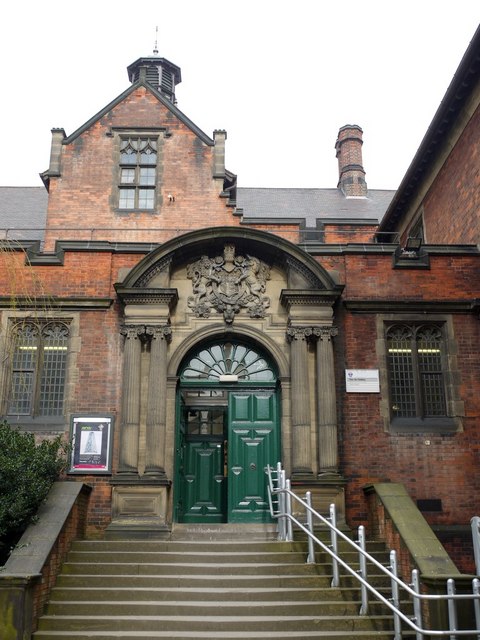
Hatton Gallery

Henderson Hall

Henry Daysh Building, Newcastle University
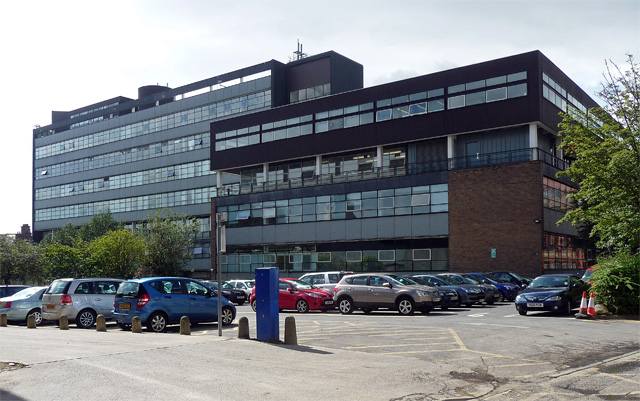
Herschel Building, Newcastle University

INTO Building, Newcastle University

King Edward VII Building, Newcastle University
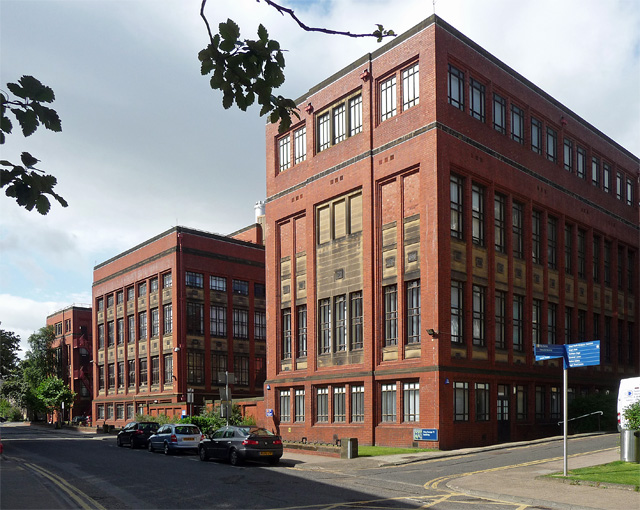
King George VI Building, Newcastle University
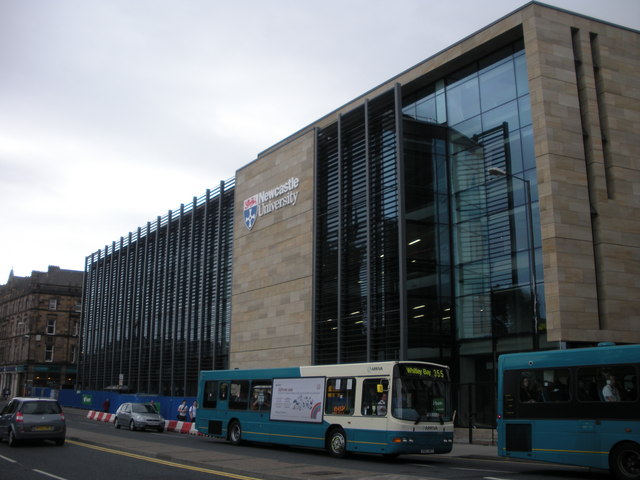
King's Gate, Newcastle University
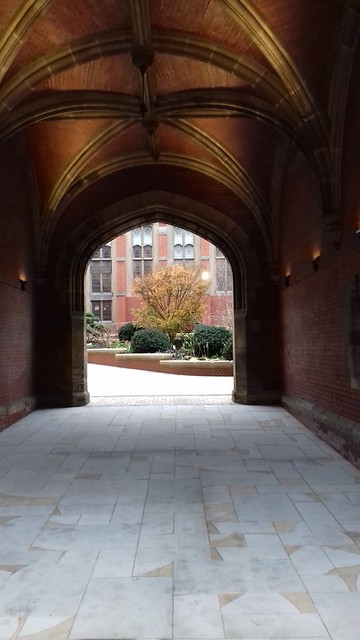
King's Quad, Newcastle University
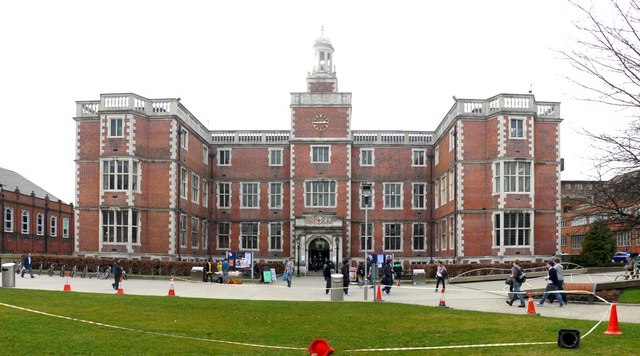
King's Walk, Newcastle University
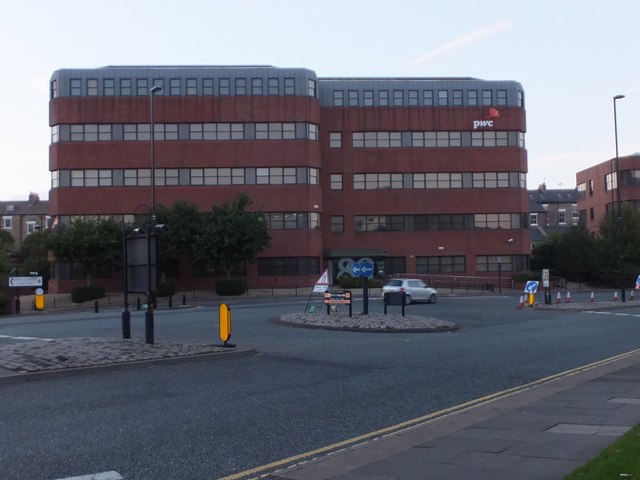
Marjorie Robinson Library Rooms, Newcastle University
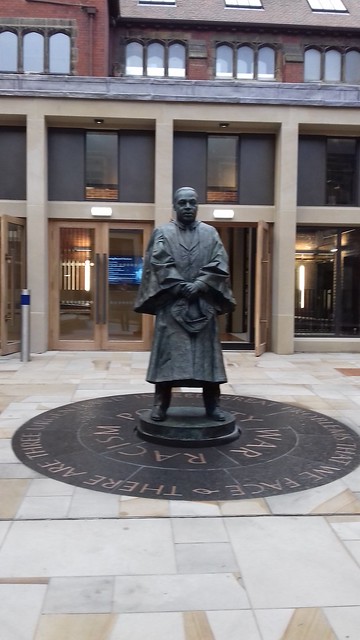
Martin Luther King, Newcastle visit

Merz Court, Newcastle University
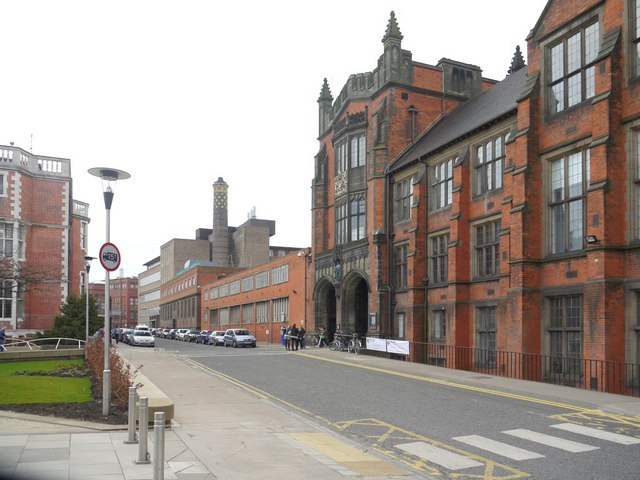
Museum of Antiquities, Newcastle

Newcastle Law School
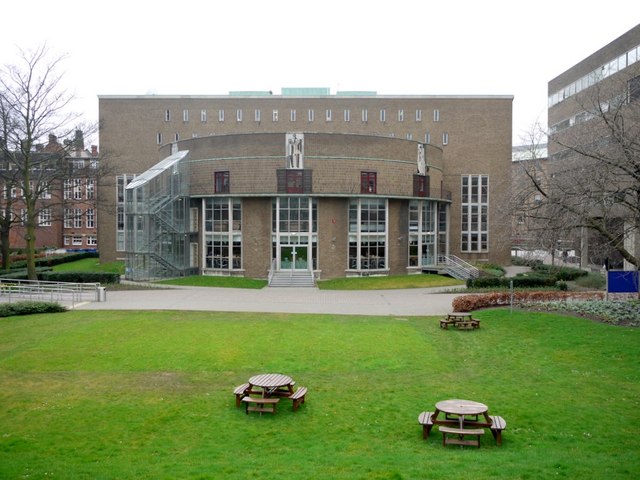
Old Library Building, Newcastle University
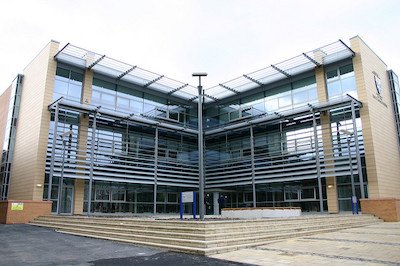
Paul O'Gorman Building, Newcastle University
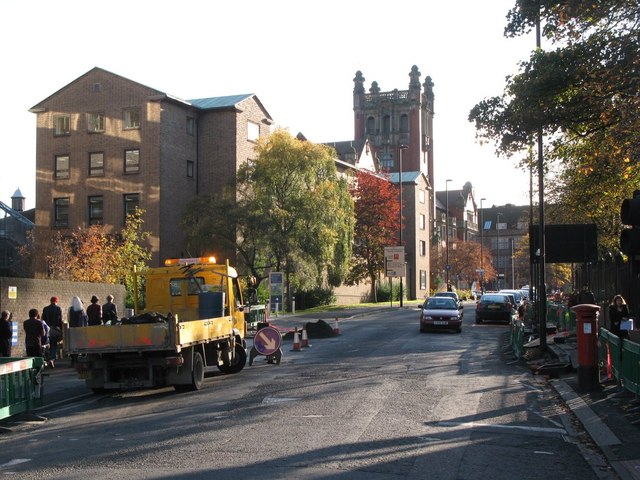
Percy Building, Newcastle University

Philip Robinson Library, Newcastle University

Politics Building, Newcastle University

Quadrangle, Newcastle University
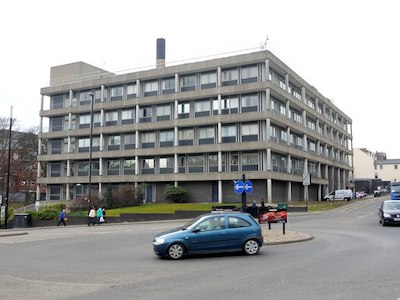
Ridley Buildings, Newcastle University
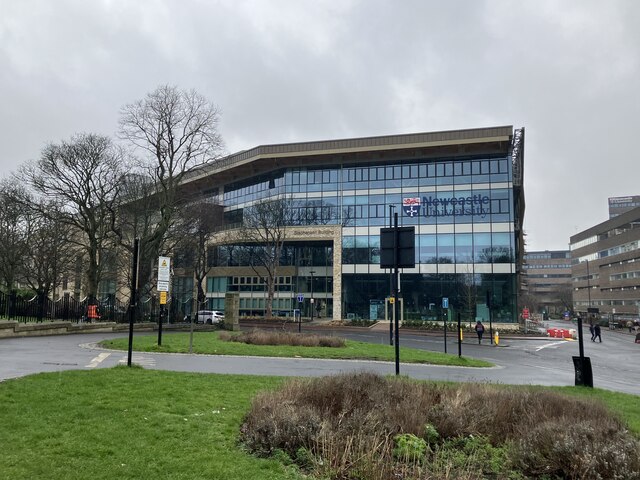
Stephenson Building, Newcastle University
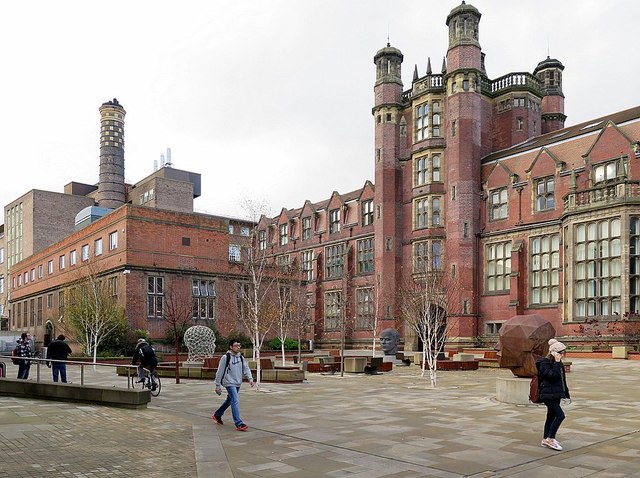
Student Forum, Newcastle University

Students' Union Building, Newcastle University
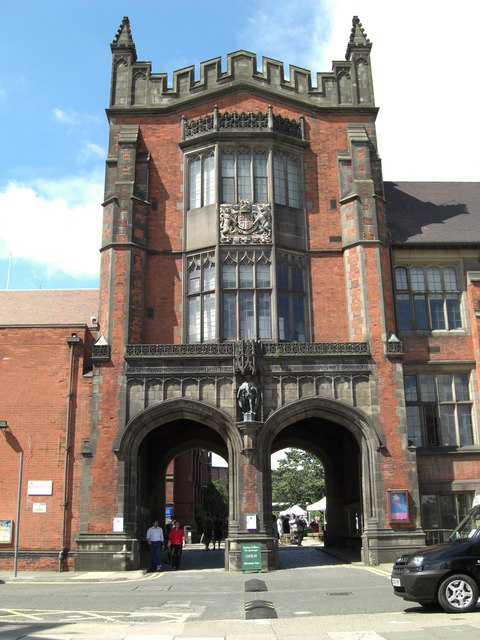
The Arches, Newcastle University
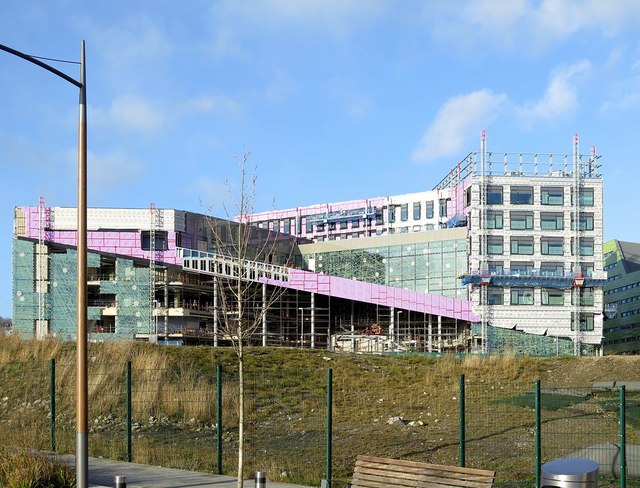
Urban Sciences Building, Newcastle Helix
